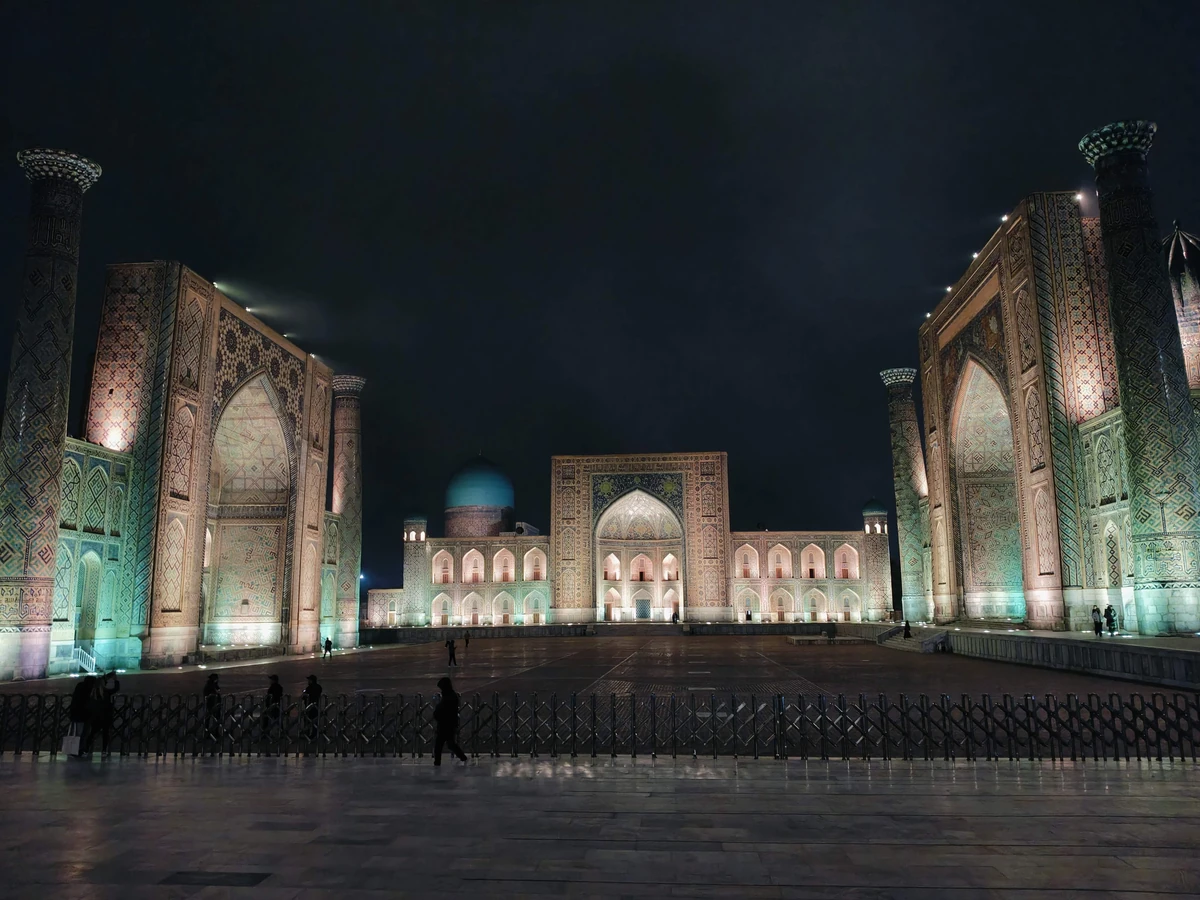
Uzbekistan
A journey through the heart of the Silk Road
Our 14-Day Uzbekistan Journey
We spent 14 incredible days exploring Uzbekistan in mid-November, from the modern capital of Tashkent to the ancient Silk Road cities of Samarkand, Bukhara, and Khiva. Our journey took us through stunning Islamic architecture, bustling bazaars, and gave us a deep appreciation for Uzbek culture and hospitality.
Below is our detailed day-by-day itinerary with recommendations on must-see attractions, places to skip, and practical information to help you plan your own Uzbekistan adventure.
Day-by-Day Itinerary
Day 1: Arrival in Tashkent
Daily Summary
Our Uzbekistan adventure began with an early morning arrival in Tashkent at 9:30 AM. After completing visa formalities, we reached our hotel by 11 AM, giving us a full day to begin exploring the city. We focused our first day on getting oriented with modern Tashkent, visiting Magic City and exploring the area around Islam Karimov Street. One of our first tasks was acquiring a local UCell SIM card for connectivity throughout our trip, which provided an excellent 44GB of data for 55,000 Som.
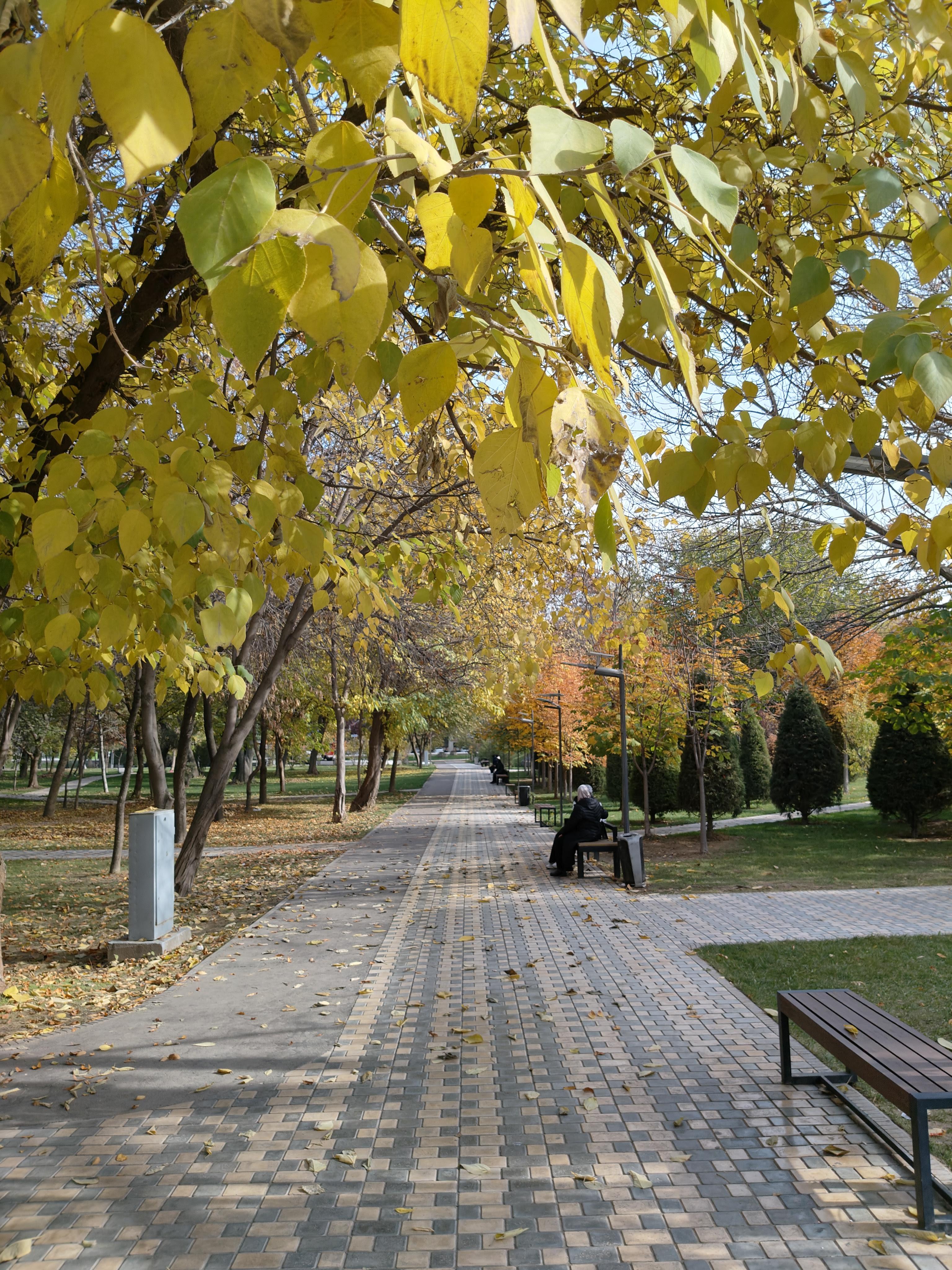
What We Enjoyed & Recommend
Magic City turned out to be an entertaining introduction to modern Tashkent. This vibrant entertainment complex offers a variety of activities including magic shows, shooting games, and teddy time games. The atmosphere is lively, and the fountain show adds a special touch to the experience. It's an excellent place to spend a couple of hours, especially if you want to ease into your Uzbekistan trip with something fun and relaxing. We also found the Yandex taxi service to be incredibly convenient and affordable for getting around the city.
What Can Be Skipped
If you're short on time or more interested in historical sites, Magic City can be omitted from your itinerary. While it's an enjoyable modern attraction, it's not essential to the Uzbekistan experience, especially if you're more interested in cultural and historical sites.
Day 2: Tashkent to Samarkand

Daily Summary
Our journey to Samarkand began with an impressive high-speed train ride on the Afrosiyob, covering 300 kilometers in just two and a half hours. The journey was remarkably comfortable, featuring excellent seats and modern amenities. After arriving in Samarkand at 10:30 AM and checking into our hotel by 11 AM, we dedicated the rest of the day to orientation walks around the historic center, getting our first glimpses of the magnificent structures that would become more familiar over the next few days.
What We Enjoyed & Recommend
The Afrosiyob train service exceeded our expectations, offering a smooth and efficient journey with no complaints whatsoever. Samarkand itself proved to be an incredibly walkable city, with a magical atmosphere enhanced by the fall season. The trees painted the cityscape in stunning shades of orange, yellow, and red, creating a beautiful backdrop for our explorations. The walk from our hotel to Registan Square, Bibi-Khanum Mosque, and Siyob Bazaar gave us an excellent introduction to the city's layout and atmosphere. The location of our hotel, Hanifa Boutique, was perfect for exploring the city on foot.
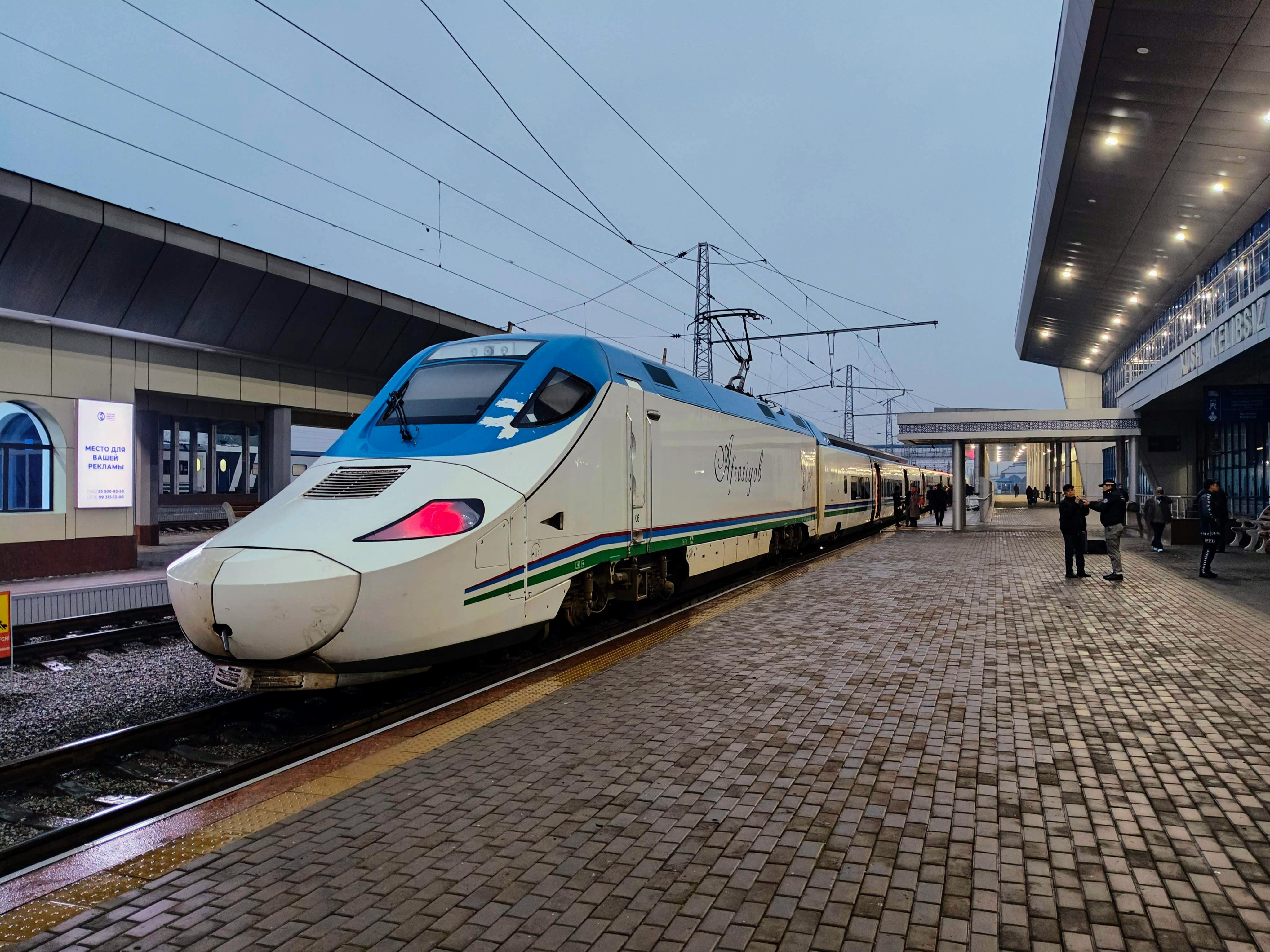
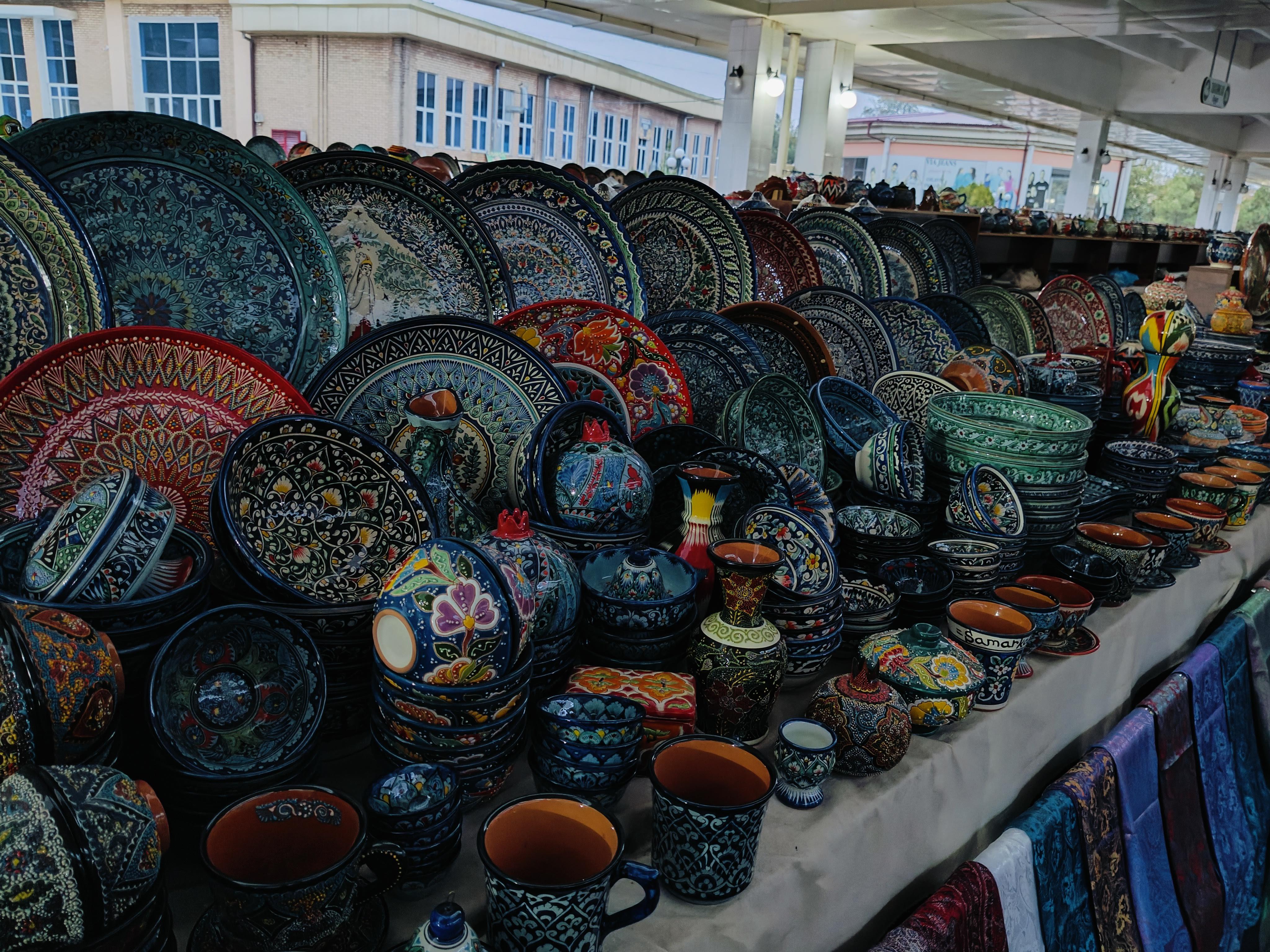
Day 3: Samarkand's Architectural Marvels
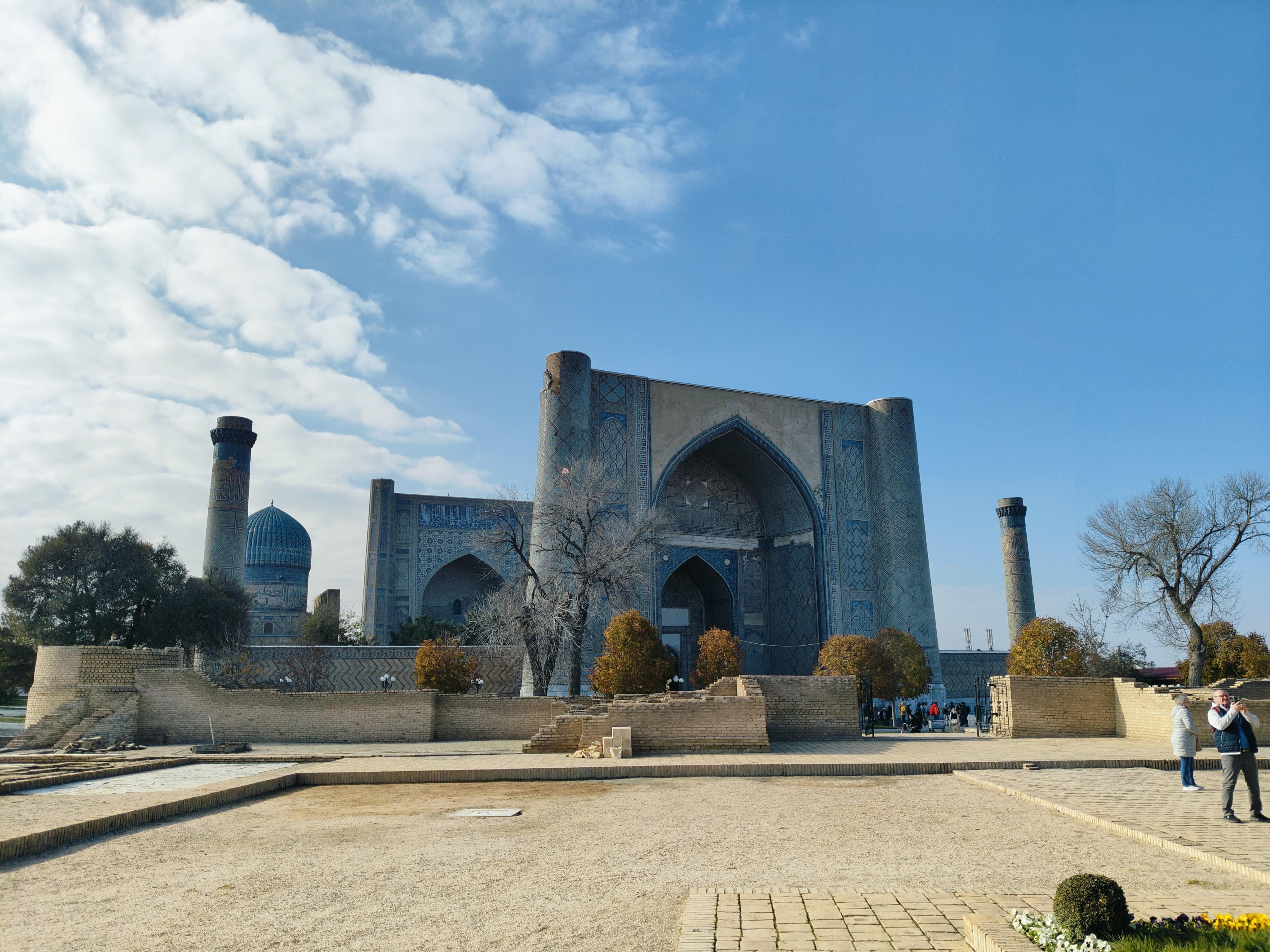
Daily Summary
Our first full day in Samarkand was dedicated to exploring its most iconic monuments. We started with the magnificent Bibi-Khanum Mosque, just an 800-meter walk from our hotel. The mosque complex, with its three distinct structures - one main mosque flanked by two smaller ones - kept us engaged for four hours. Later, we visited Gur-i-Timur, the final resting place of Timur, spending three hours exploring its intricate details. We concluded the day with a mesmerizing night view of Registan Square.
What We Enjoyed & Recommend
The Bibi-Khanum Mosque was absolutely stunning, and having a guide here was invaluable for understanding its historical significance.
Similarly, Gur-i-Timur proved to be incredibly beautiful, with its guide sharing fascinating stories about Timur and the architecture. We highly recommend getting guides at both monuments, as they provide essential context that would otherwise be missed. The experience of walking between sites was pleasant, and we used Yandex taxis for some longer journeys.
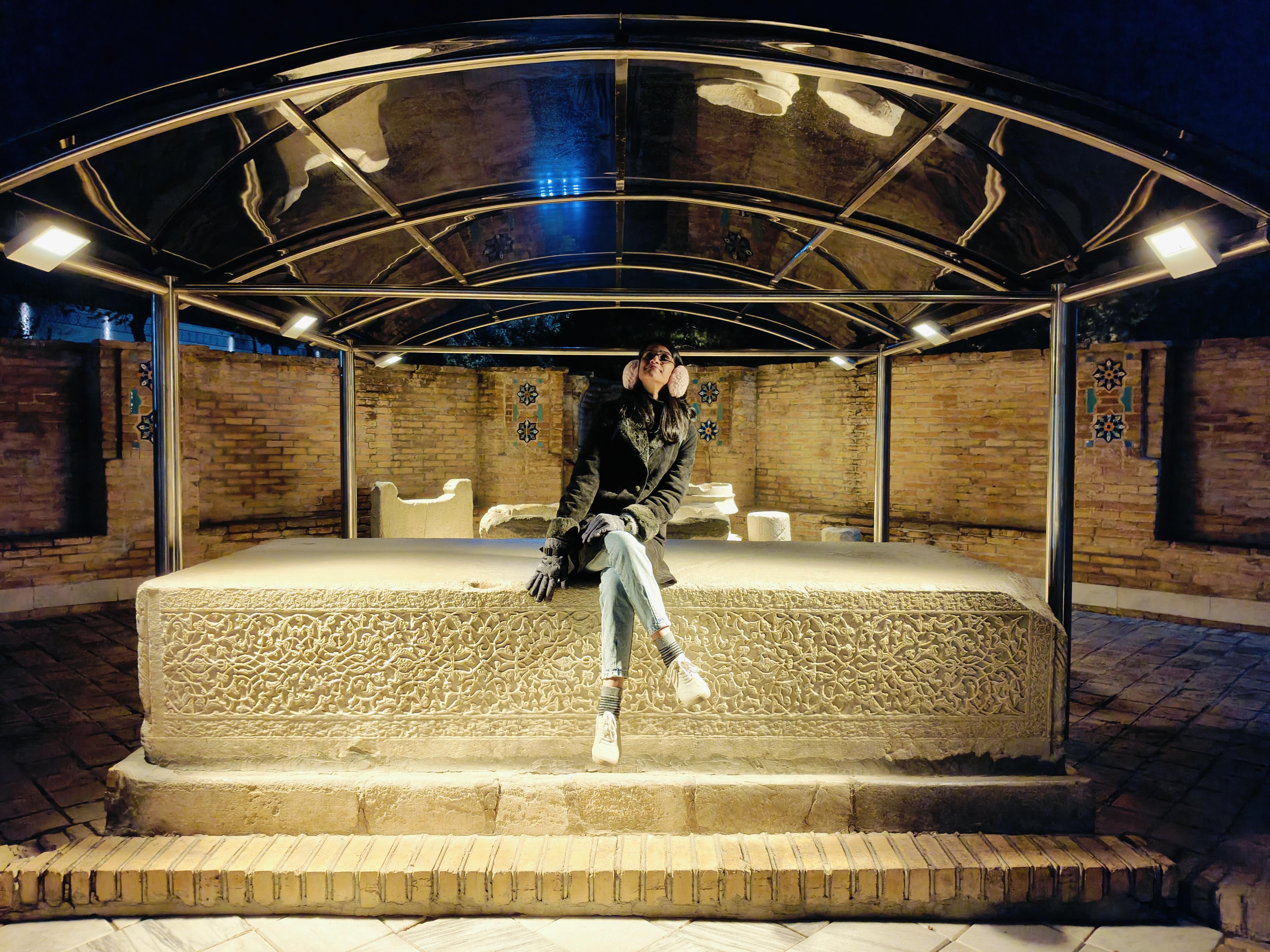

What Can Be Skipped
The Bibi-Khanum Mausoleum, located opposite the mosque, can be skipped. Despite its 35,000 UZS entry fee, it's just a single room containing Bibi-Khanum's tomb and doesn't offer much value compared to the magnificent mosque complex itself.
Day 4: Samarkand's Sacred Sites
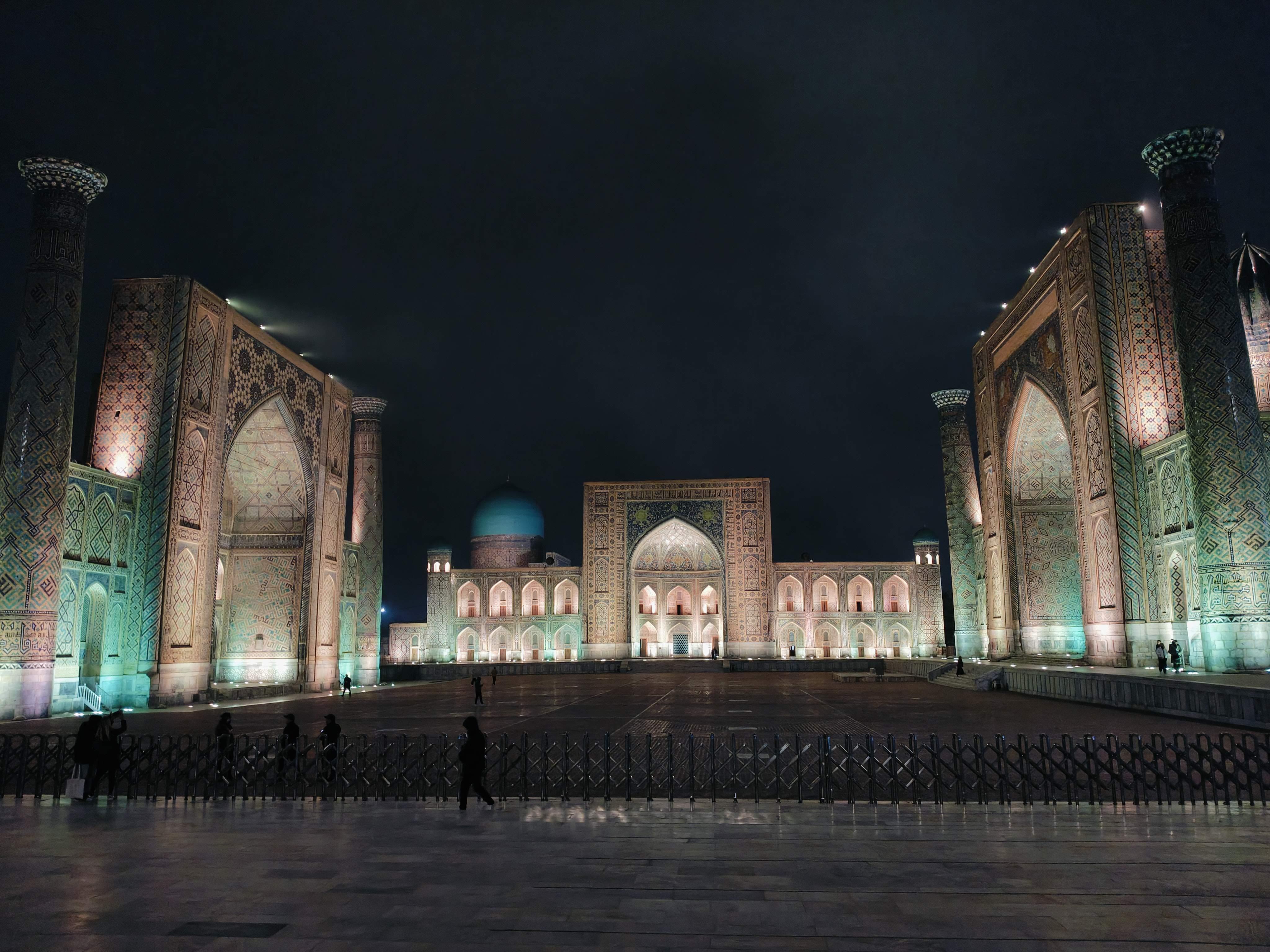
Daily Summary
Our day began with a visit to Shah-i-Zinda at 11 AM, though our timing coincided with Friday prayers which affected our schedule. We then explored the ancient Afrosiab Settlement, which dates back to the 9th century BC and was famously destroyed by Genghis Khan in 1220. The highlight of our day was spending 5.5 hours at Registan Square (from 3 PM to 8:30 PM), including watching the evening light show. The settlement includes both a museum and the excavation site of the ancient city.
What We Enjoyed & Recommend
Registan Square was absolutely stunning and a must-visit for both day and night views. We spent over 5 hours here, and having a guide was extremely valuable for understanding the complex's history and significance. While the 8 PM light show was average, the natural night lighting of the square was breathtaking. The Afrosiab Settlement offered an interesting glimpse into ancient history, though the experience would have been enhanced with a guide. The museum houses numerous artifacts, though better descriptions would have helped in understanding their significance.
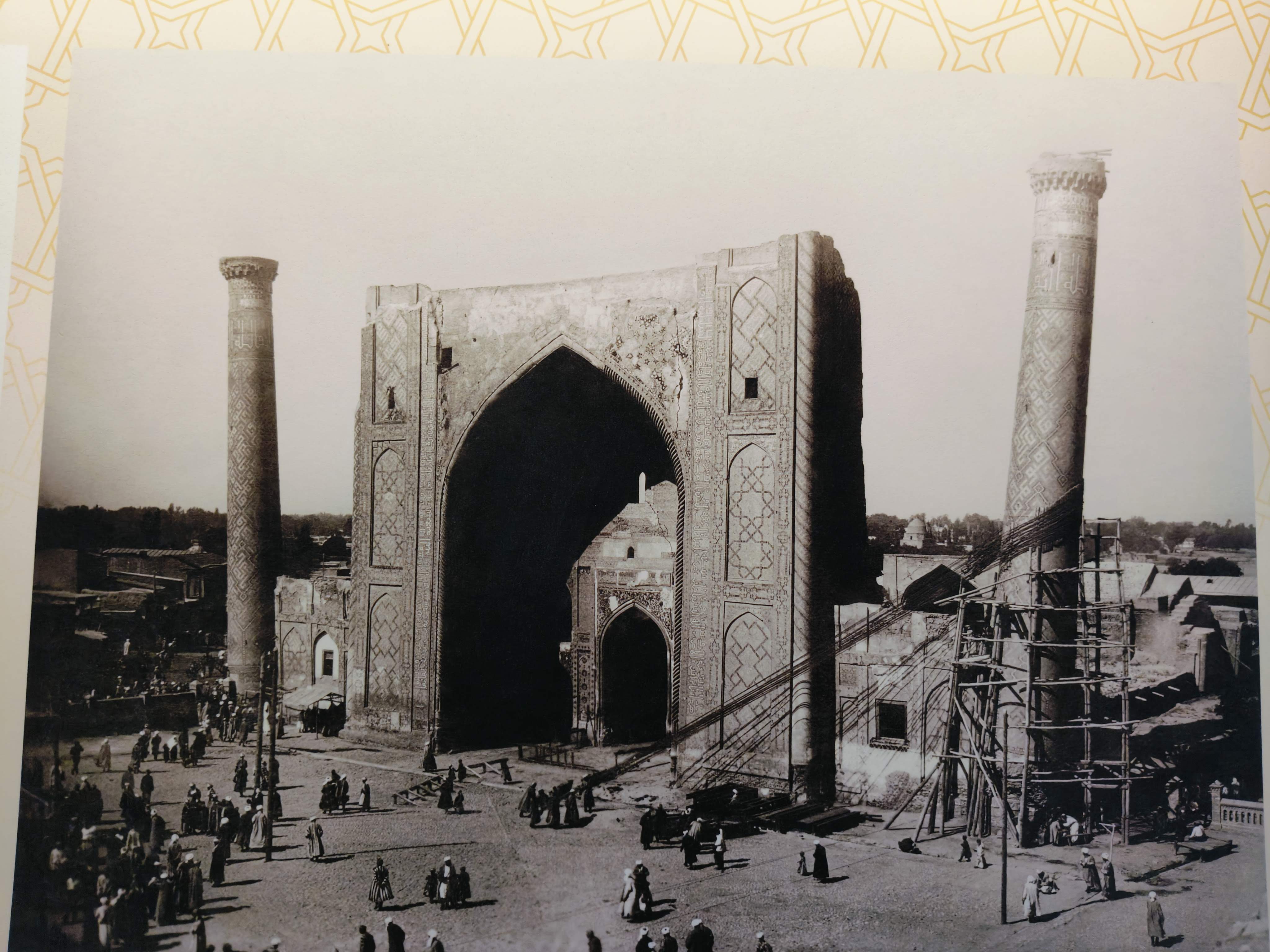
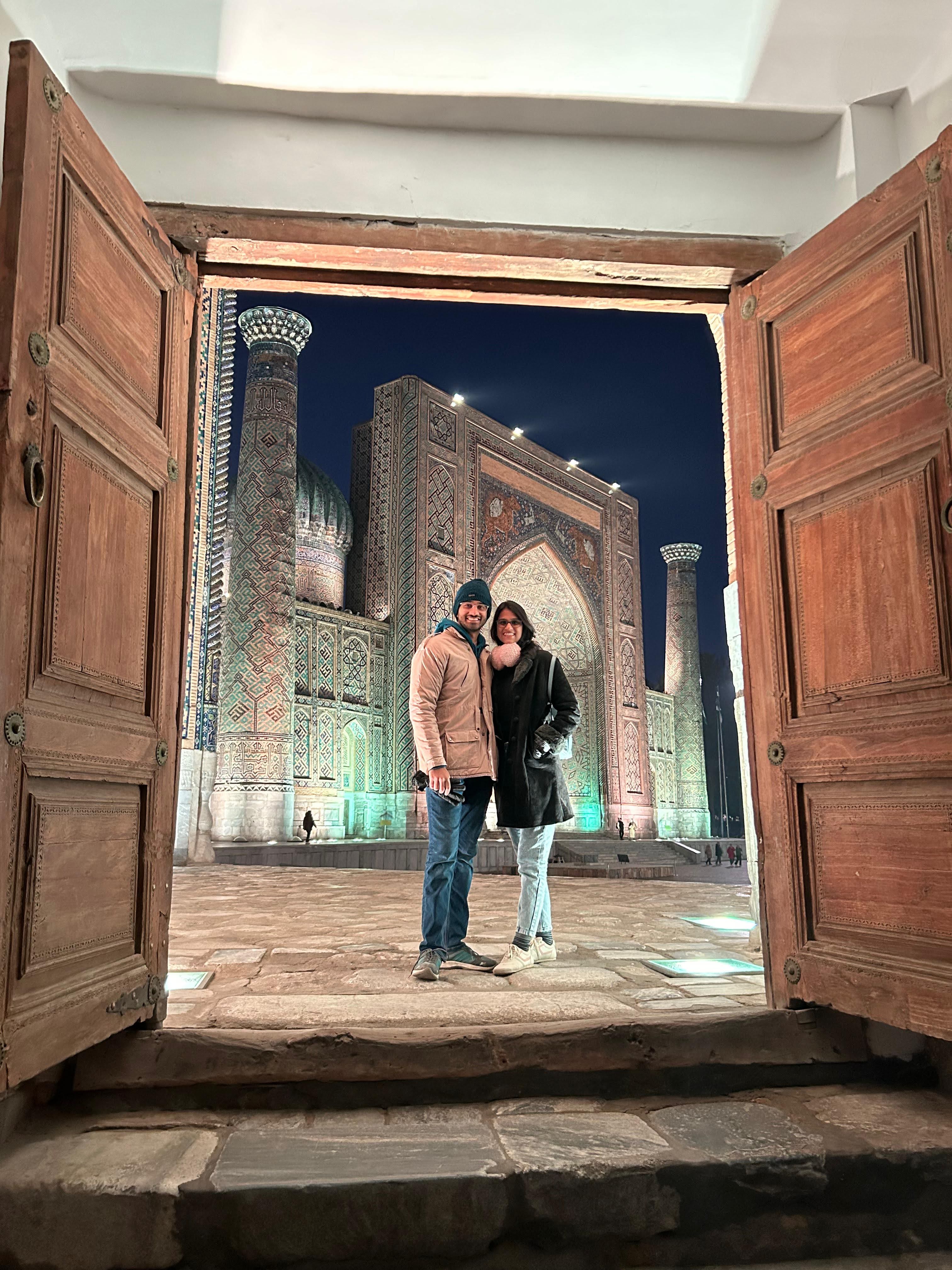
What Can Be Skipped
The Afrosiab Settlement can be omitted if you're short on time. While historically significant, the lack of good descriptions and difficulty in understanding the site layout without a guide makes it less engaging than other attractions. Also, the 8 PM light show at Registan is skippable - the natural evening illumination is more impressive.
Day 5: Scientific Legacy and Sacred Architecture
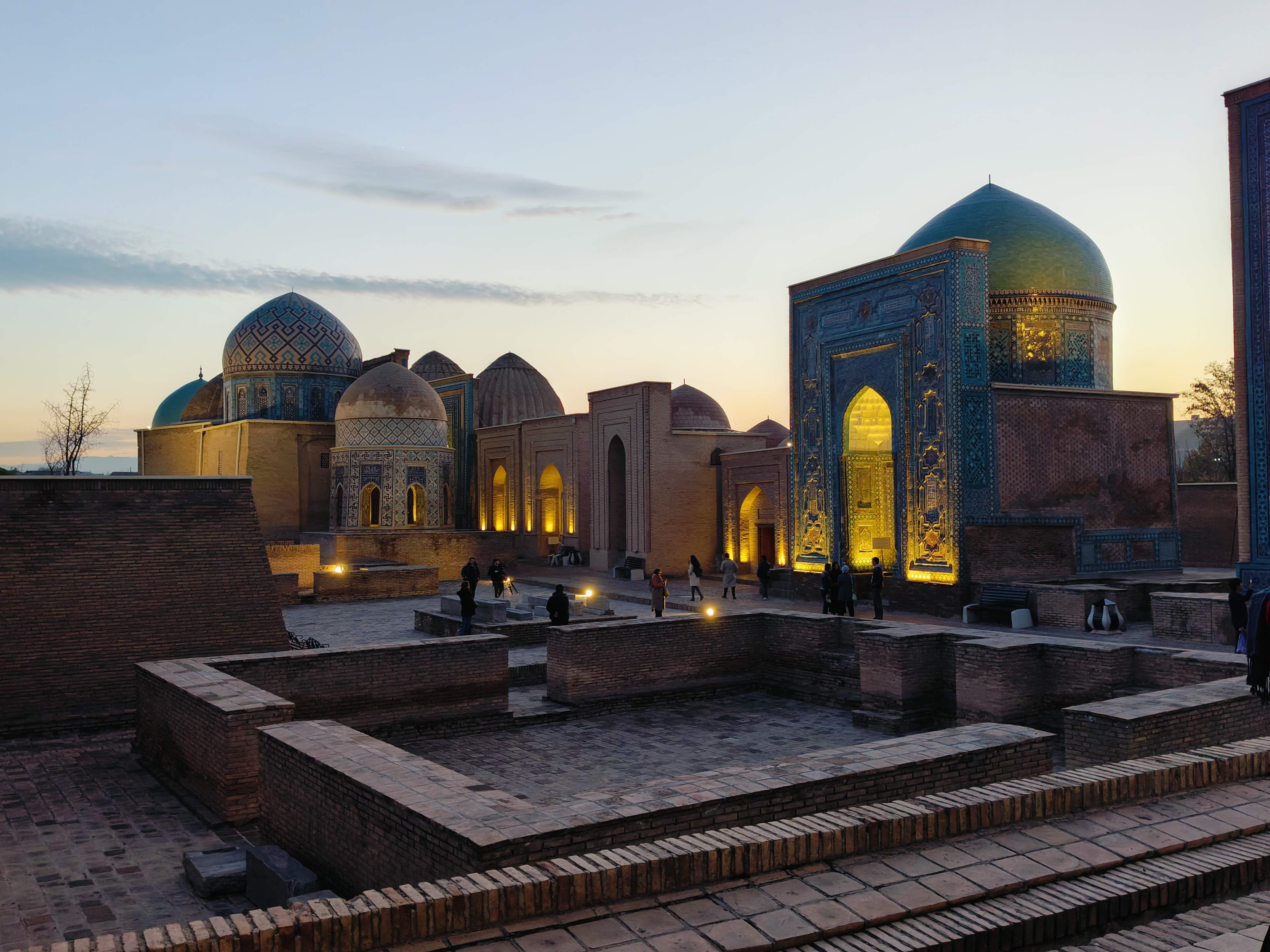
Daily Summary
We dedicated our morning to exploring the fascinating Ulug Beg Observatory, a 15th-century scientific marvel built by Timur's grandson. While most of the original structure is gone, the preserved underground section and accompanying museum provide fascinating insights into medieval astronomical achievements. In the afternoon, we returned to Shah-i-Zinda (4 PM to 7 PM) for a proper exploration of its remarkable collection of mausoleums, including the tomb of Prophet Mohammed's cousin who brought Islam to Central Asia.
What We Enjoyed & Recommend
The underground section of Ulug Beg Observatory was particularly fascinating, offering a tangible connection to the advanced scientific work conducted here in the 15th century. Having a guide here was invaluable for understanding the astronomical significance of the site. Shah-i-Zinda proved to be a highlight with its multiple Timurid dynasty tombs and stunning architecture. The most significant tomb belongs to Prophet Mohammed's cousin who introduced Islam to Central Asia in the 7th century. While English-speaking guides are rare here, if you can find one, their insights greatly enhance the experience.
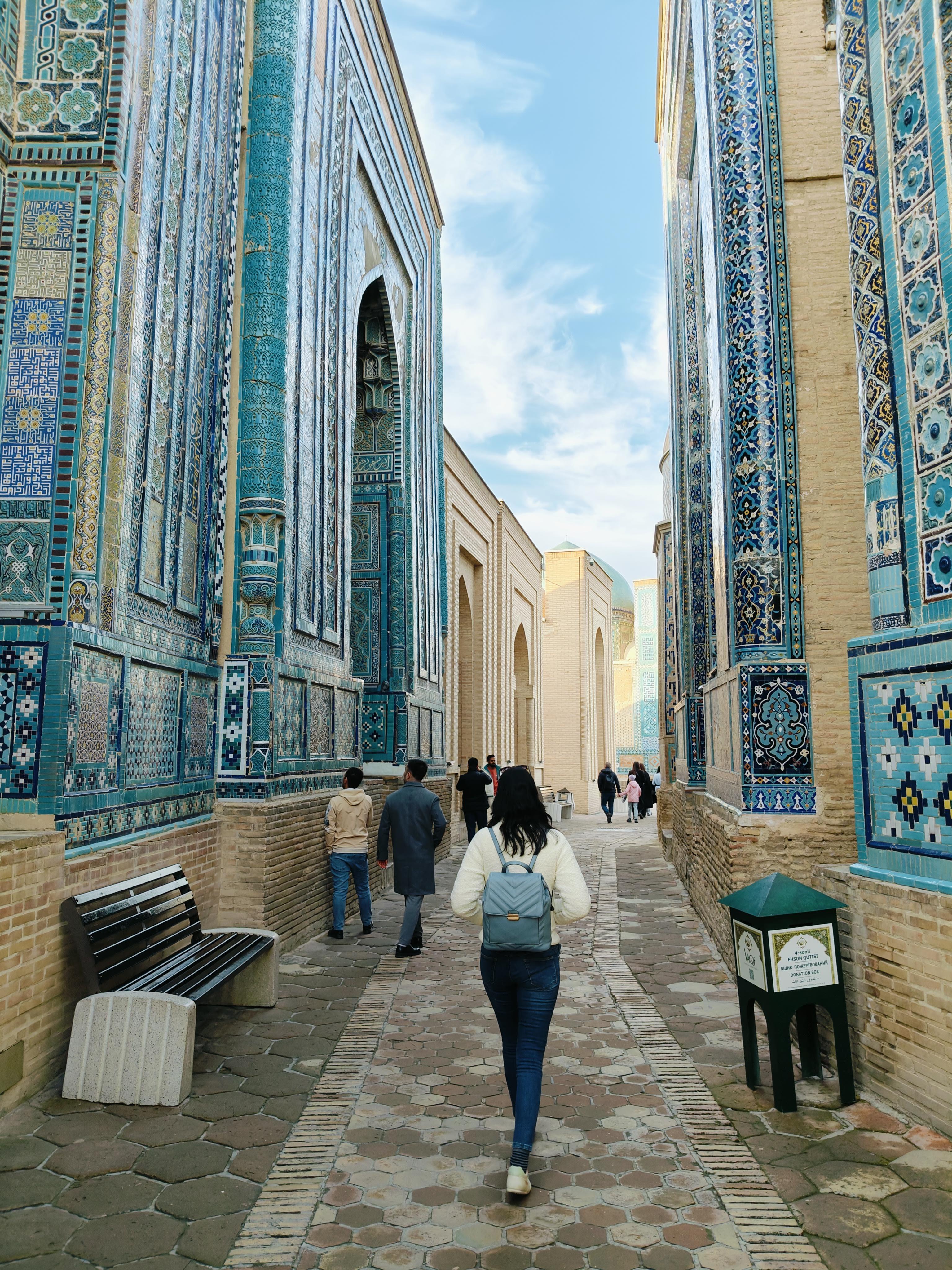
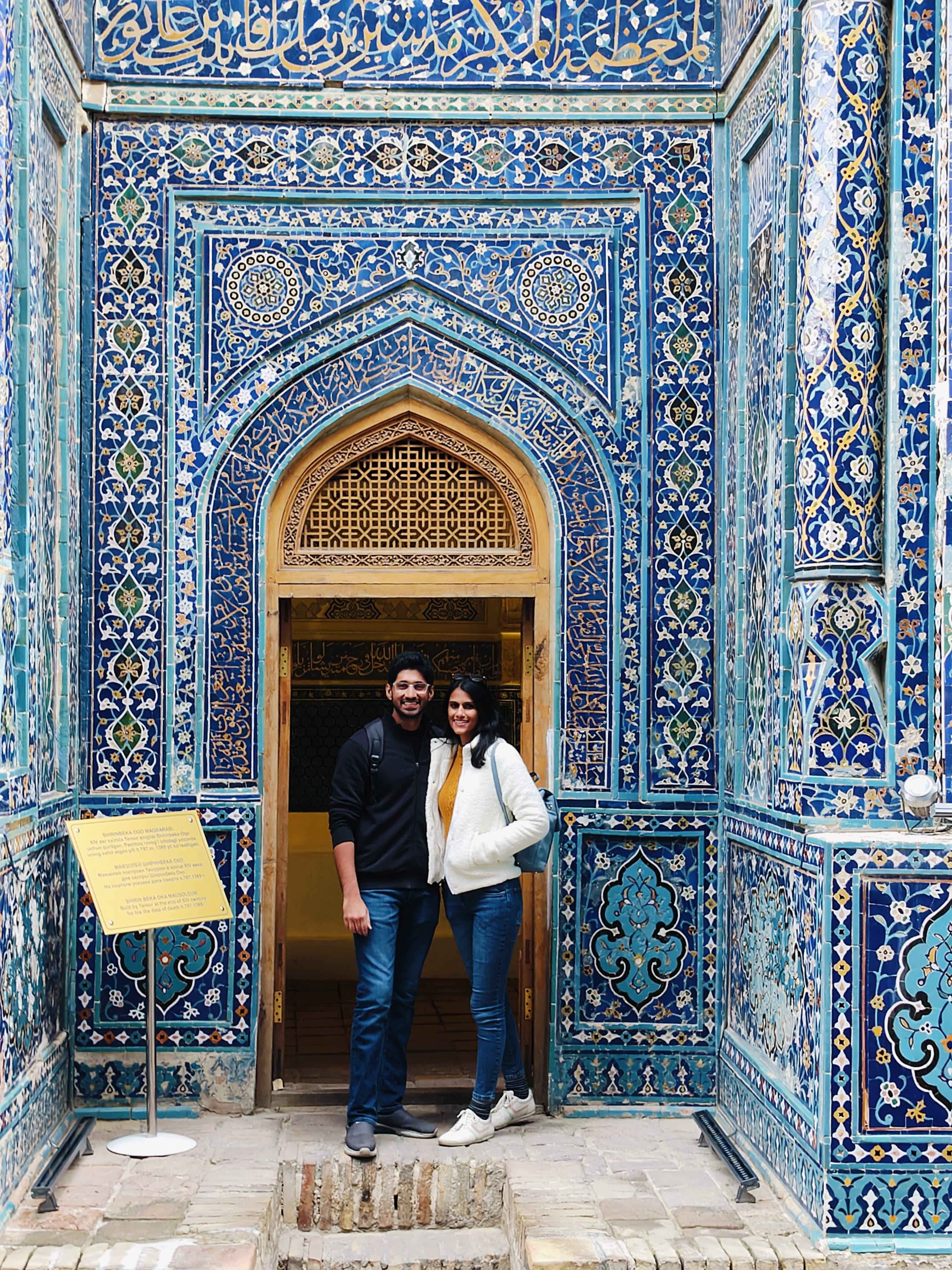
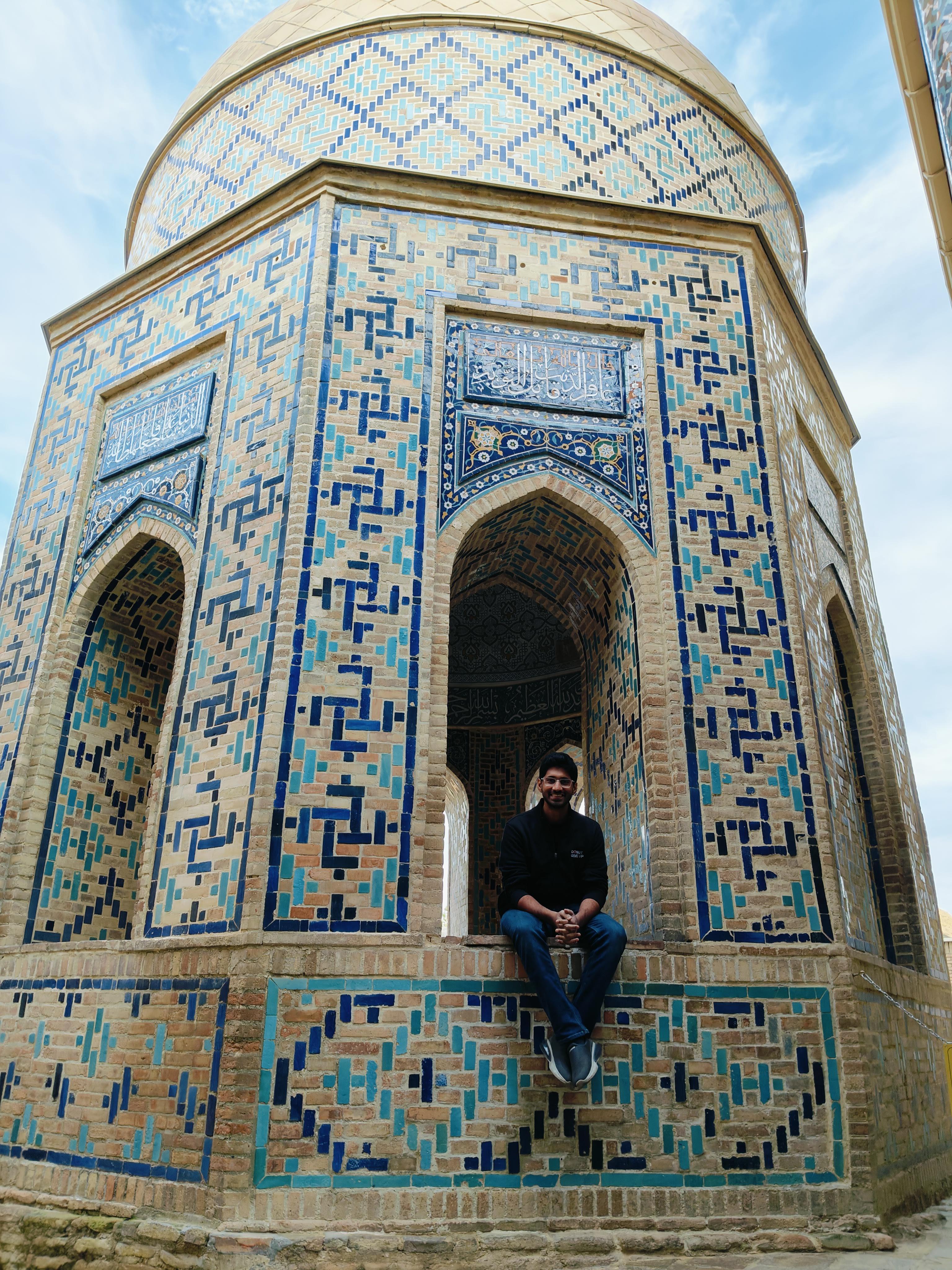
Day 6: Journey to Bukhara
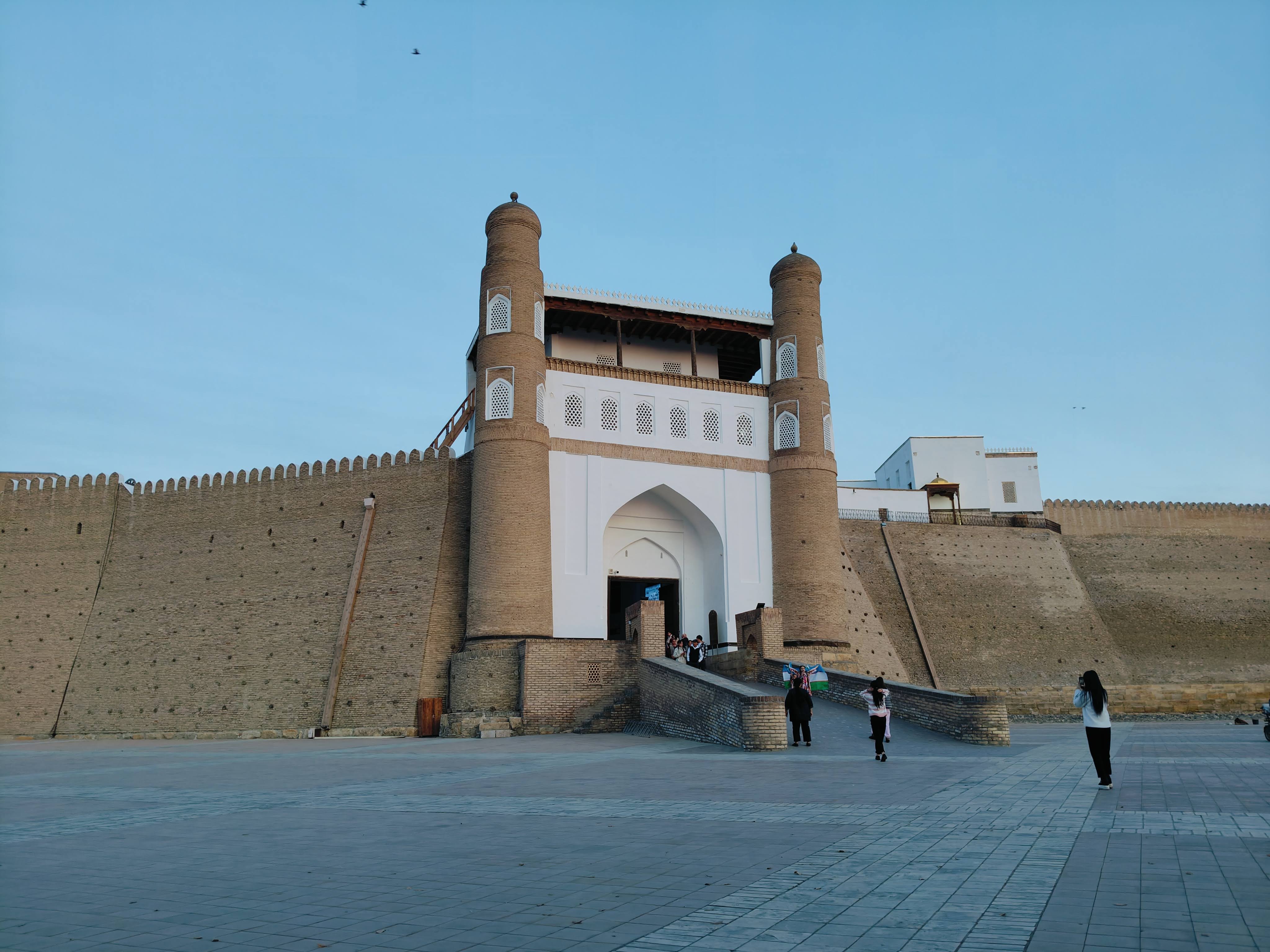
Daily Summary
Our journey continued with another comfortable Afrosiyob train ride, this time to Bukhara, covering 280 kilometers in just two hours. Upon arrival, we began exploring the historic city, starting with the impressive Ark of Bukhara, a fortress dating back to the 5th century. We spent 3-3.5 hours exploring the fortress and its various museums, though the experience was somewhat hampered by the absence of an English-speaking guide. The evening was spent walking around the atmospheric Lyabi Khause Square, soaking in the authentic Silk Road city ambiance.
What We Enjoyed & Recommend
The Afrosiyob train journey was once again excellent, with comfortable seats and efficient service. Old Bukhara proved to be wonderfully walkable, with a magical atmosphere as we explored the areas from our hotel to the Poi Kalan ensemble, the Ark, and Lyabi Square. The city truly captures the essence of an ancient Silk Road settlement. The view from the top of the Ark fortress offers a spectacular panorama of the old town, making it worth the visit even without a guide.
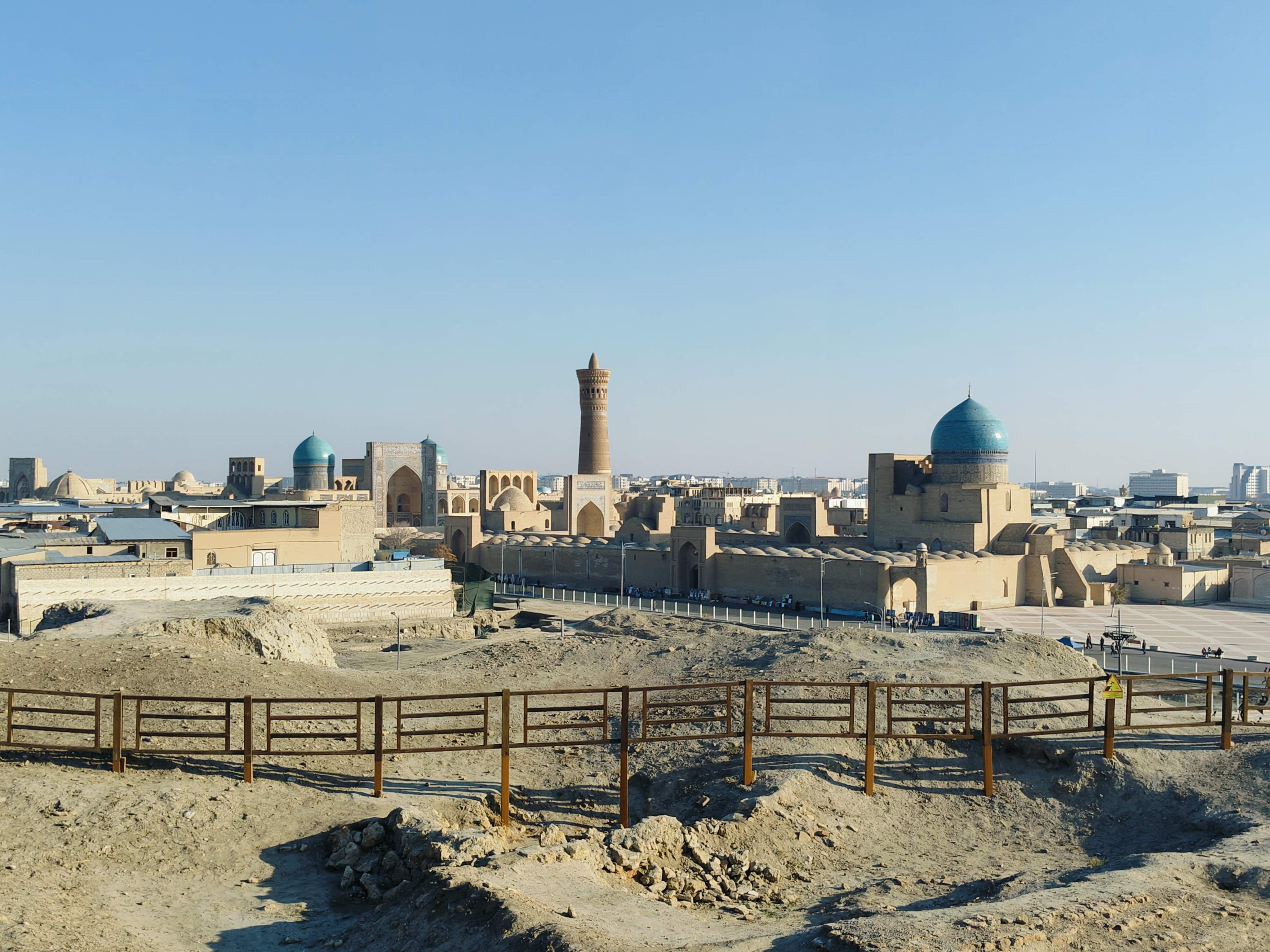
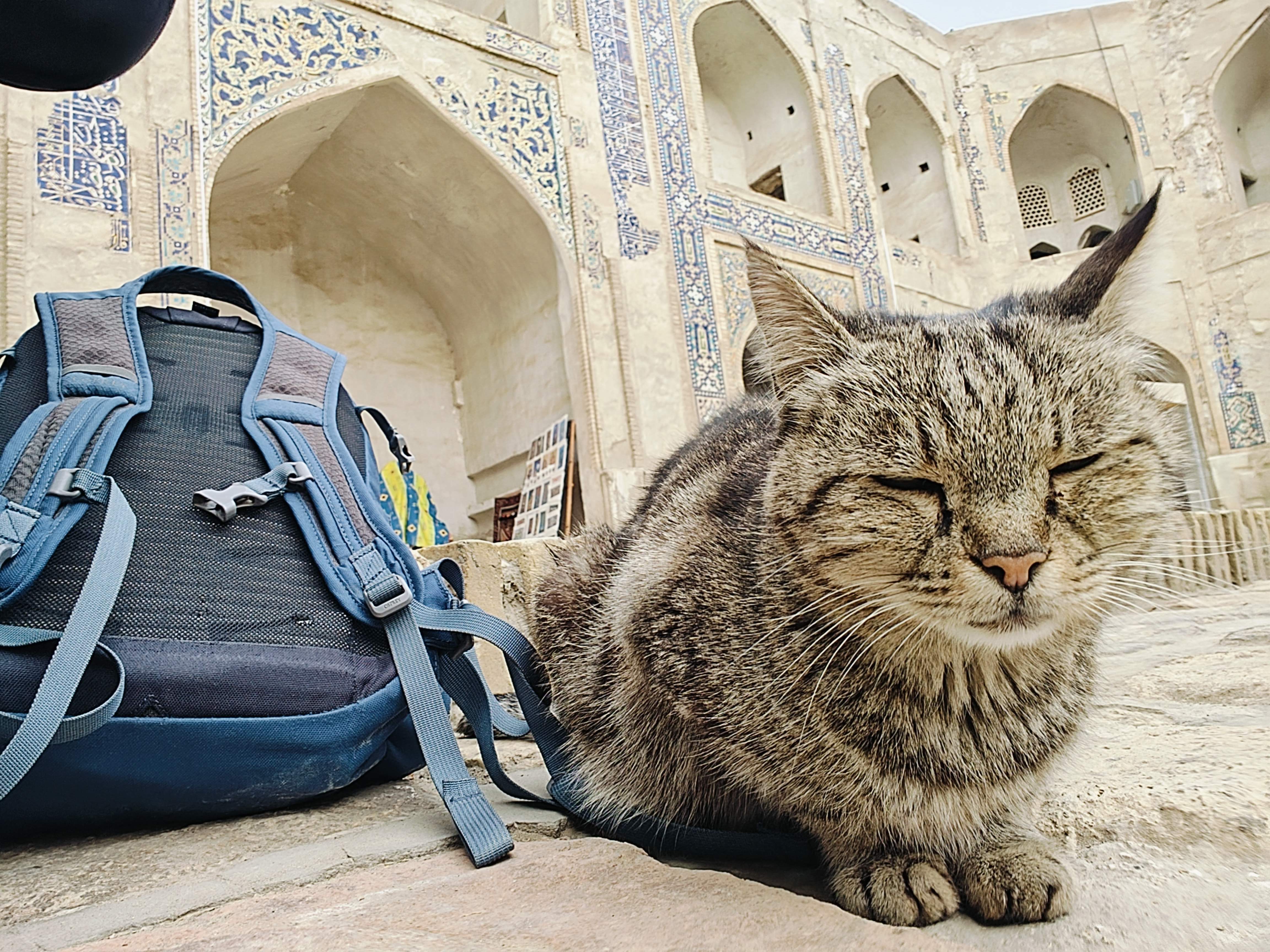
What Can Be Skipped
The Ark of Bukhara can be skipped if you're unable to secure an English-speaking guide. The museums inside lack good descriptions, making it difficult to distinguish between 5th and 18th-century constructions. Without a guide, only the view from the top of the Ark is truly worthwhile.
Day 7: Bukhara's Historic Heart
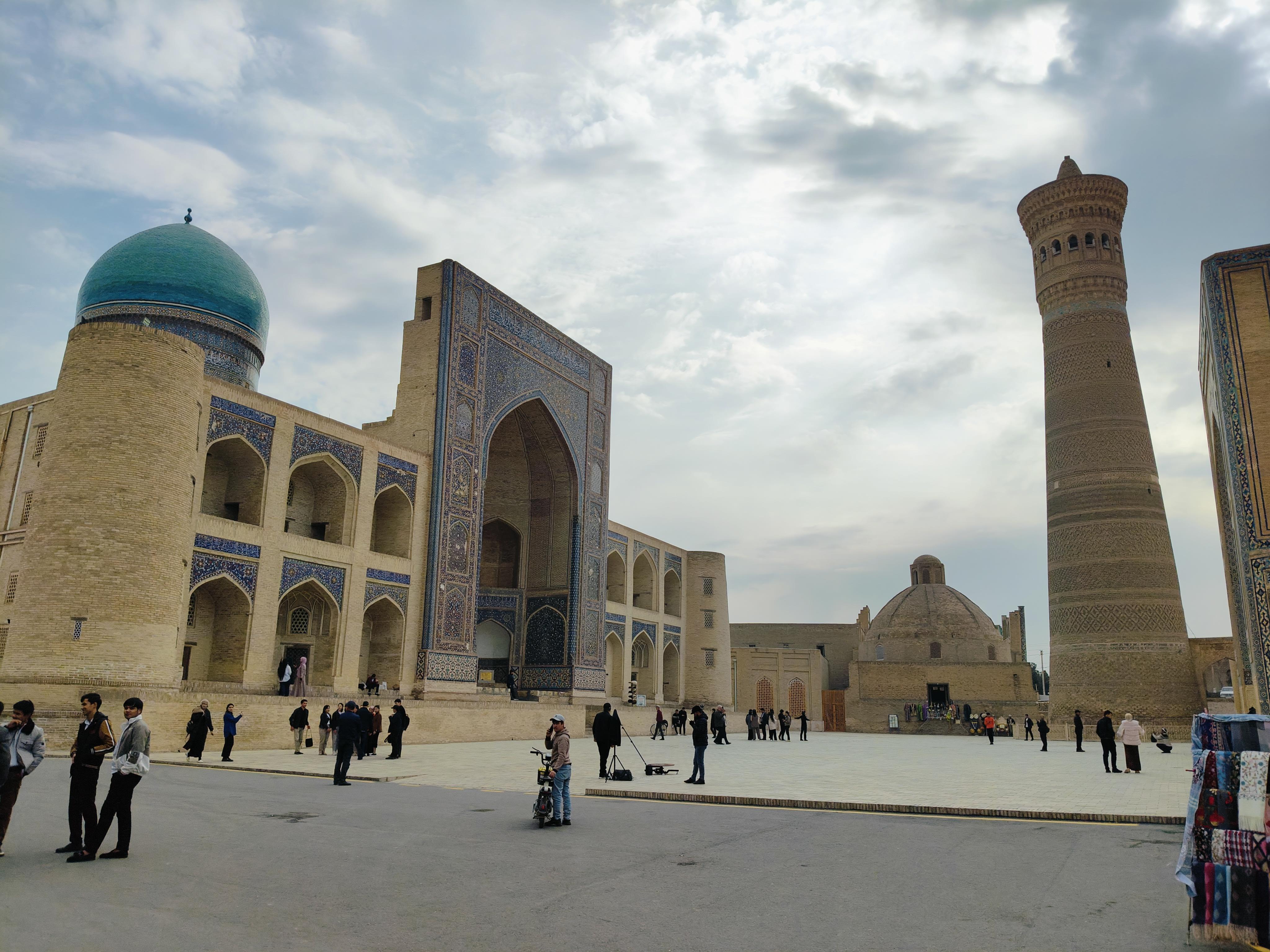
Daily Summary
Today was dedicated to exploring Bukhara's diverse architectural heritage. We started with the charming Chor Minar, which, while smaller than its Hyderabad namesake, offers a more peaceful atmosphere. We then visited the Abdul Aziz Madrasa, notable for its incomplete construction due to its builder's fateful journey to Mecca. Our exploration continued with Maghak-i-Attori (Bukhara's oldest religious site), followed by visits to Nodir Devon Begi Madrassa and Ulug Beg Madrasa. The day concluded with views of the impressive Kalon Minaret.
What We Enjoyed & Recommend
Chor Minar provided a wonderfully peaceful experience with fewer tourists, allowing us to sit and admire the architecture at leisure. The courtyard of Abdul Aziz Madrasa was particularly impressive, and Maghak-i-Attori's well-preserved structure offered fascinating insights into Bukhara's religious history. For dining, we discovered Joy Restaurant, which offers excellent vegetarian options and accepts cards - a rarity in Bukhara. Their Potato Samsa, Bichat with Spinach, and Grilled Vegetables were particularly good.

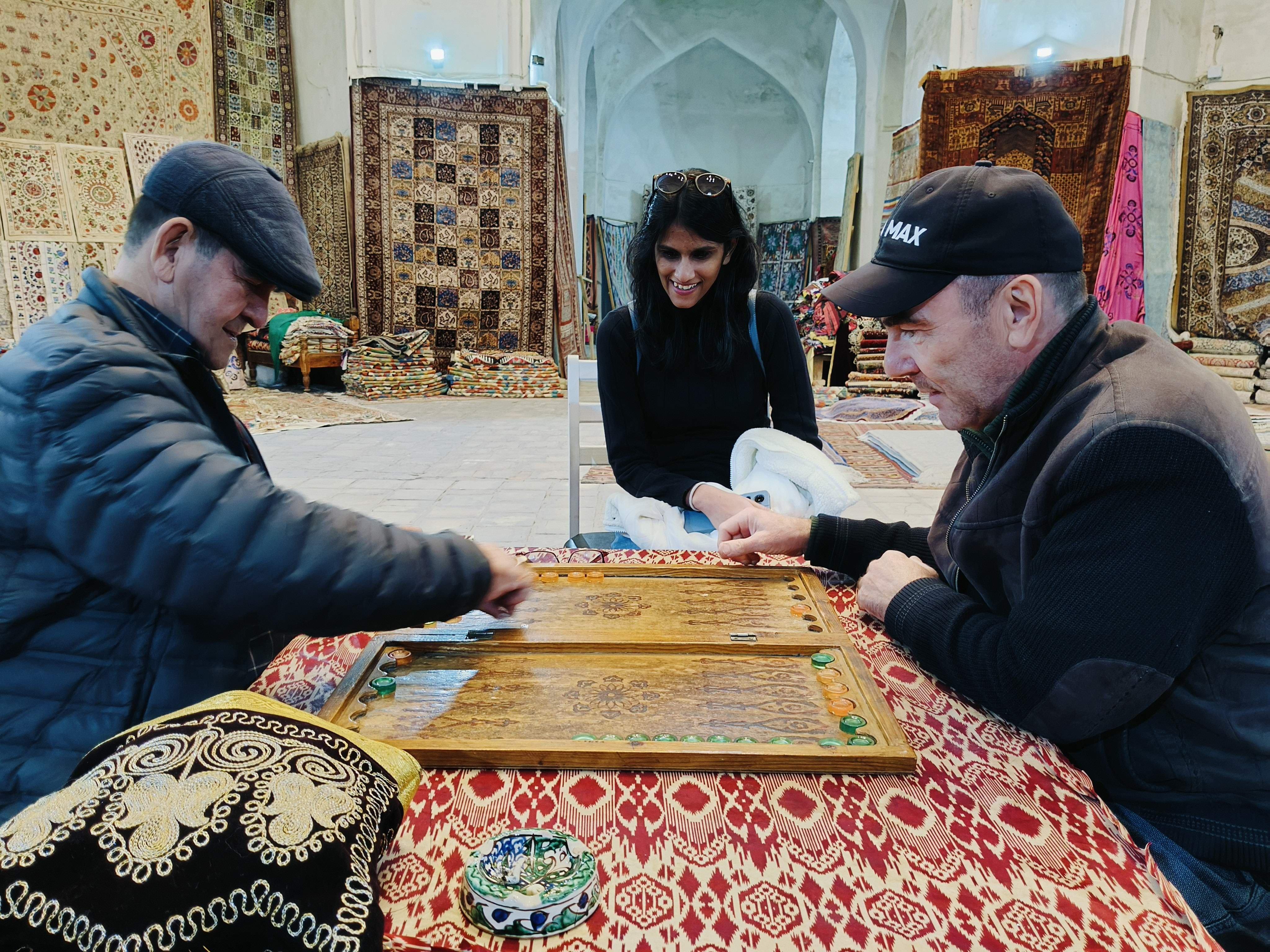
What Can Be Skipped
We recommend skipping all museum interiors in Bukhara as they are poorly labeled and unimpressive. Specifically avoid:
- The museum inside Abdul Aziz Madrasa (focus on the courtyard instead)
- Nodir Devon Begi Museum (the exterior is beautiful but the museum is disappointing)
- The calligraphy museum in Ulug Beg Madrasa
Day 8: Bukhara's Sacred Complex

Daily Summary
Our exploration of Bukhara continued with the magnificent Poi Kalon complex, where we took a one-hour guided tour covering the Mir Arab Madrassa, Poi Kalon Minaret, and Mosque. We then made a brief visit to the historic Zindon prison, followed by the discovery of the 10th-century Ismail Sommani Mausoleum. The day concluded with an exterior view of the beautiful Bolo Hauz Mosque, which we admired for about 15 minutes.
What We Enjoyed & Recommend
The Poi Kalon complex was absolutely stunning, and we highly recommend viewing it both during day and night. Our guide provided excellent insights during the one-hour tour, making it essential for understanding the complex's significance. The Ismail Sommani Mausoleum, despite its simple structure, holds fascinating historical importance, and the nearby park provides a perfect spot for relaxation. For food, we enjoyed both Joy Restaurant (for their samsa and bichat) and Chess Zone (known for their tasty mushroom burger and fries).
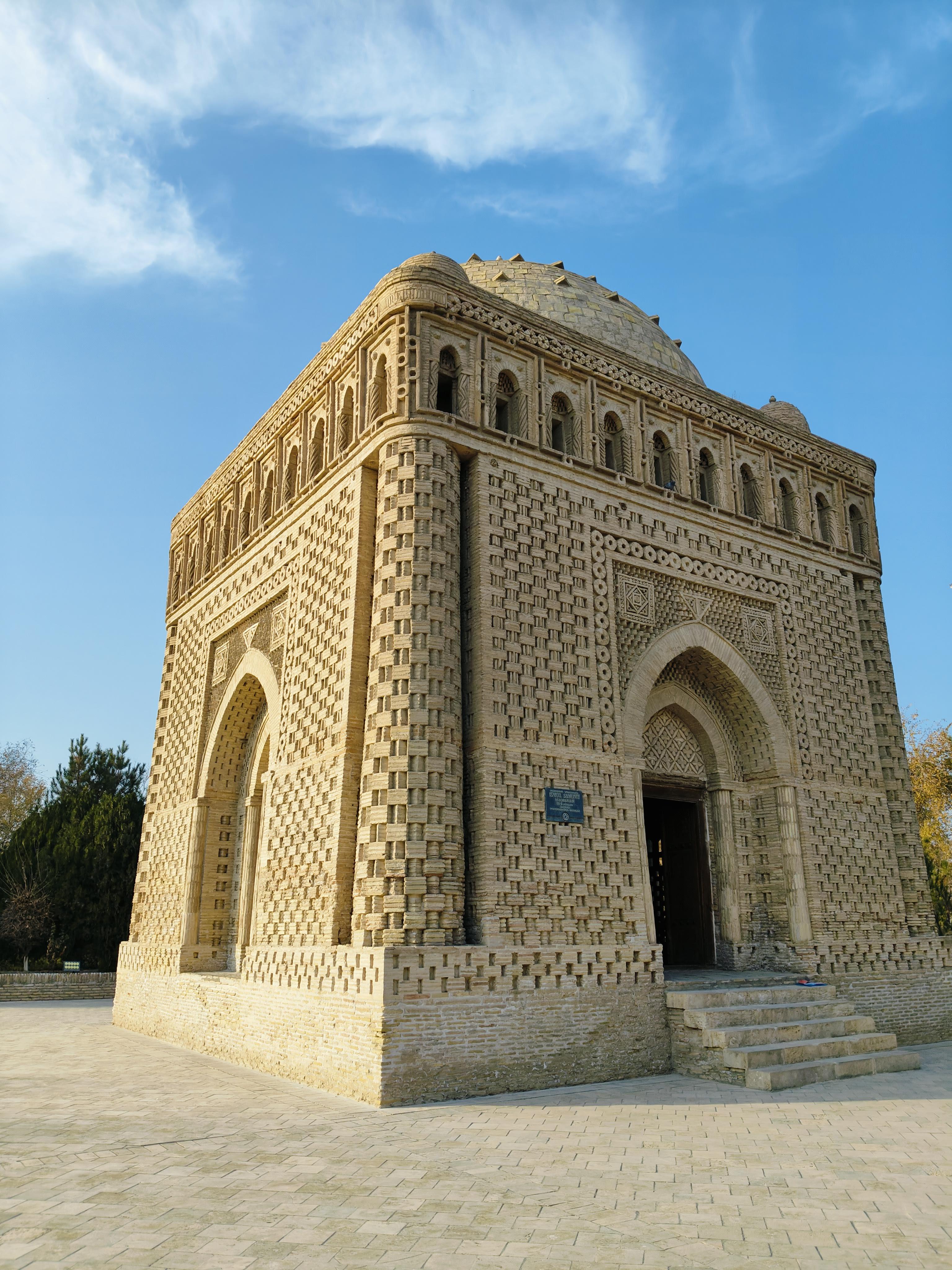

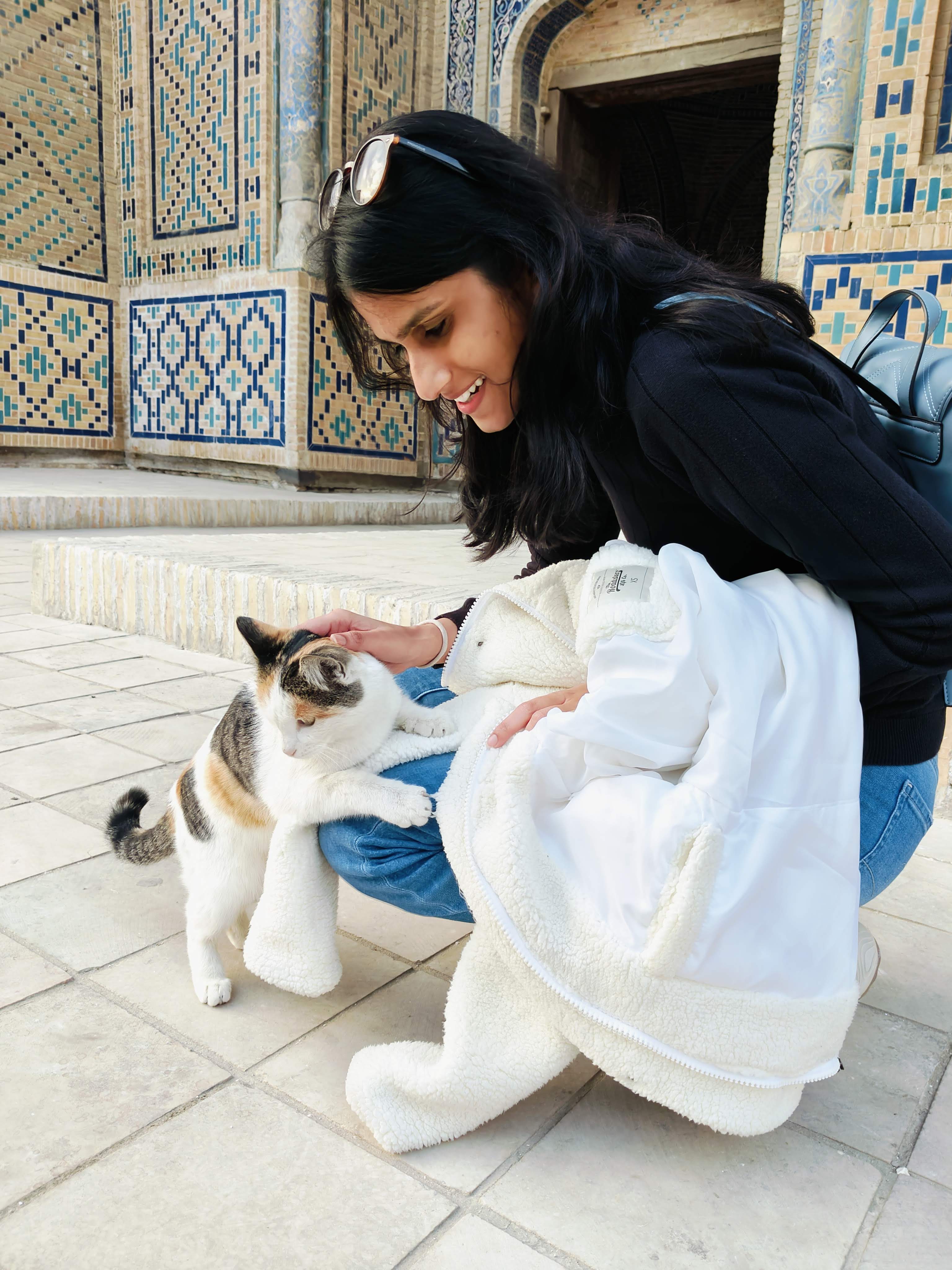
What Can Be Skipped
The Zindon prison, dating from the late 1700s, proved relatively uneventful and can be easily skipped without missing much of Bukhara's historical significance.
Day 9: Arrival in Khiva
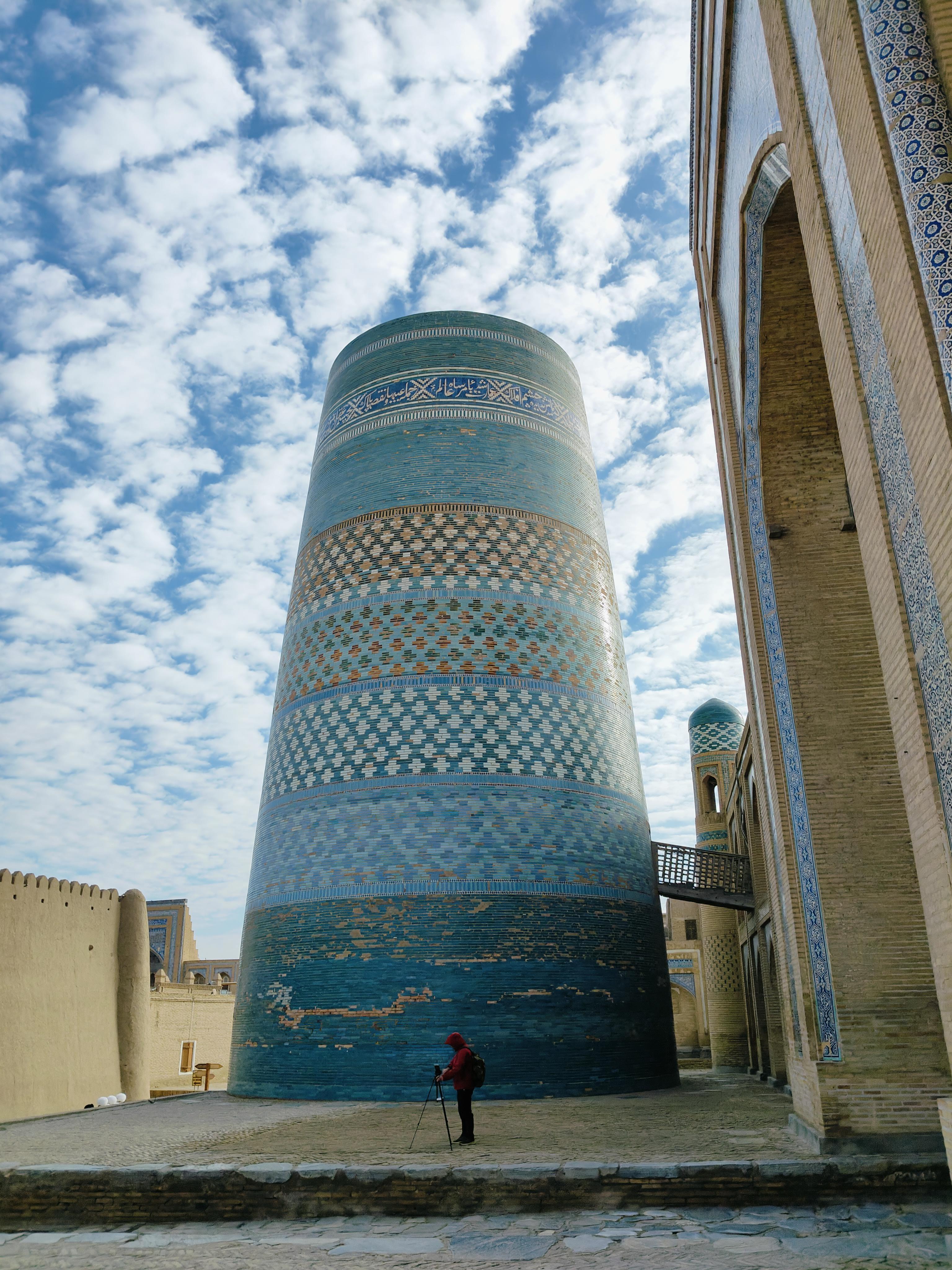
Daily Summary
We arrived in Khiva by noon and took a taxi (30,000 UZS) to Hotel Nazira Boutique, perfectly located inside the walled city of Ichan Kala. Our first afternoon was dedicated to exploring the stunning Pahlavan Makhmud Mausoleum, dedicated to a 10th-century philosopher, painter, artist, and wrestler. The rest of the day was spent wandering through the atmospheric lanes of the old city, experiencing the authentic Silk Road market atmosphere.
What We Enjoyed & Recommend
The Pahlavan Makhmud Mausoleum was a highlight - while its exterior is modest, the interior is absolutely stunning and shouldn't be missed. The experience of walking through Khiva's ancient lanes was magical, offering an authentic glimpse into life along the Silk Road. For dining, we tried Terressa (their vegetarian sandwich and tomato soup were pricey but good) and MJ Cafe (known for excellent fries, though their carrot soup was disappointing).

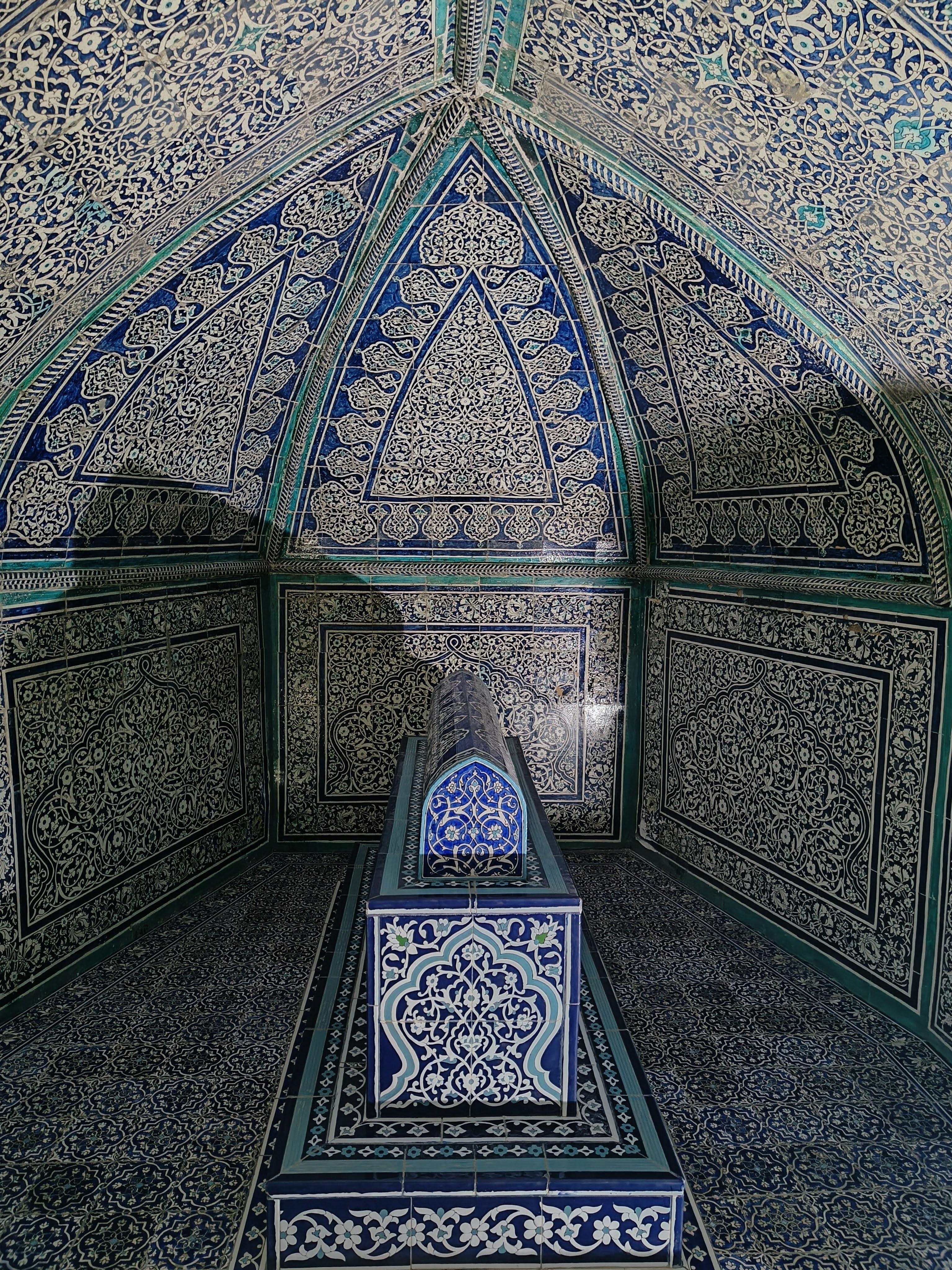
Tips
Staying inside Ichan Kala is highly recommended for the authentic experience. Once you're checked in, everything is walkable within the city limits, eliminating the need for taxis during your stay in Khiva.
Day 10: Discovering Khiva's Treasures
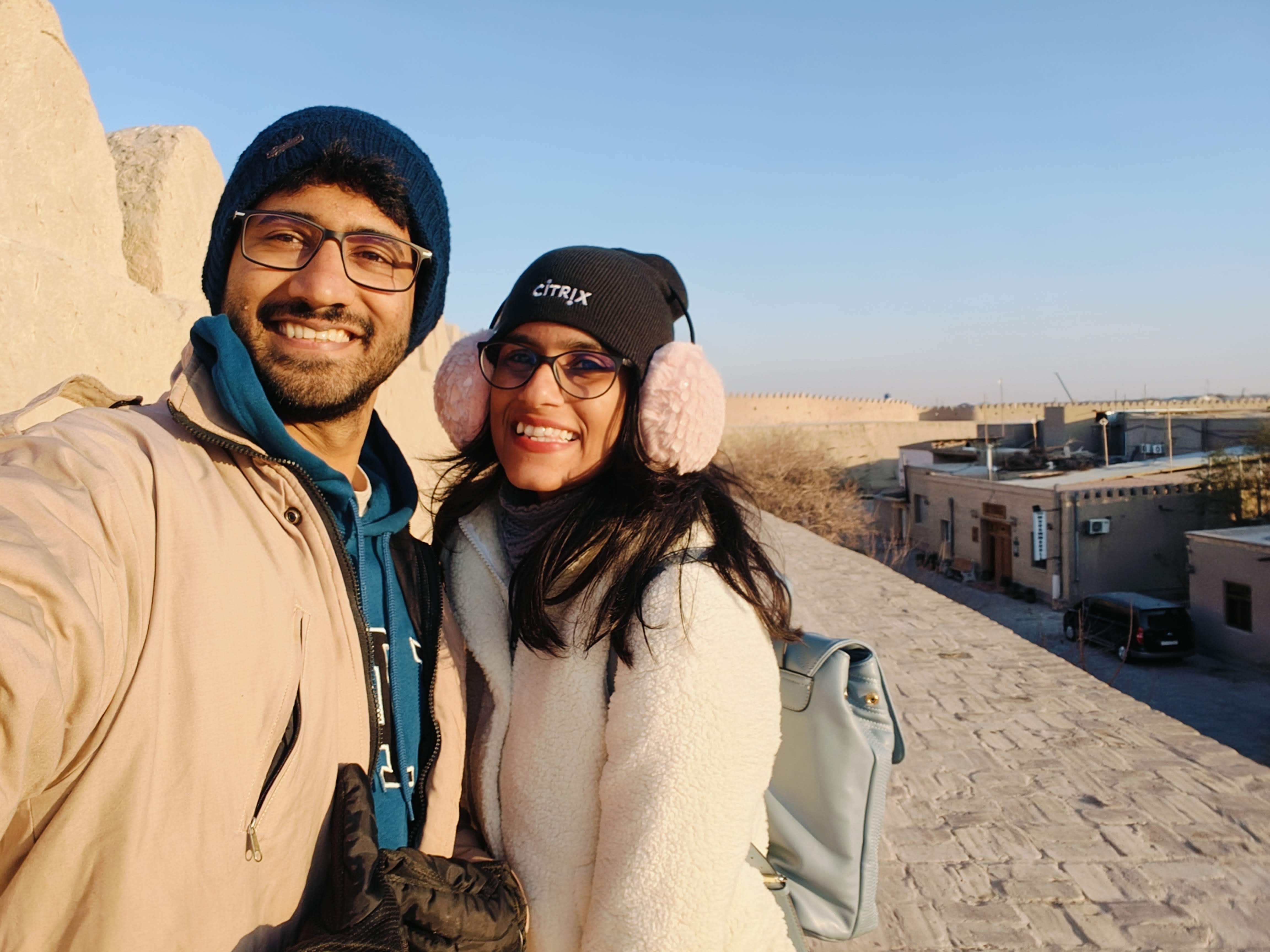
Daily Summary
Today we took a comprehensive two-hour guided tour of Ichan Kala, visiting 5-6 major sites including the Juma Mosque, Secret Palace, and King's Palace. The guide provided valuable insights into various madrassas and monuments throughout the walled city. We concluded our day with a sunset walk along the city wall, which offered panoramic views of the ancient city. The universal ticket gave us access to about 40 different monuments within Ichan Kala.
What We Enjoyed & Recommend
The guided tour was excellent and provided crucial context to understand Khiva's rich history. The universal ticket proved to be great value, allowing access to numerous monuments. For meals, we tried Mirzo Boshi Cafe, which offered excellent fries and good gumma (though their tomato soup was disappointing), and revisited Terressa, though the food wasn't as good as our previous day's experience.

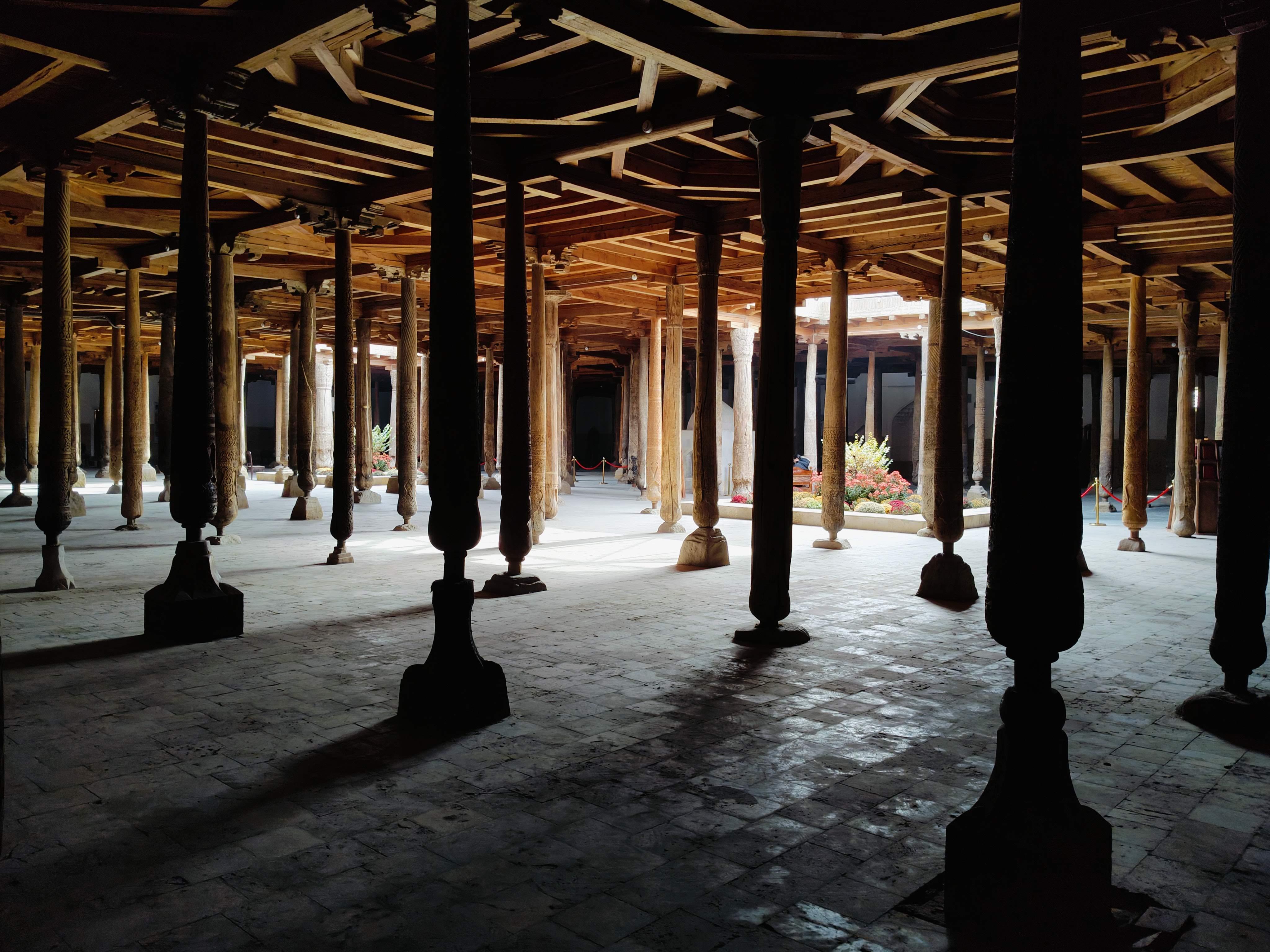
What Can Be Skipped
If you're planning to climb the Islam Hoja minaret (which we did the next day), you can skip walking the city wall as the minaret provides even better views. Consider visiting Nurallaboy Palace if you have extra time, though we didn't manage to include it in our itinerary.
Day 11: Khiva's Final Day
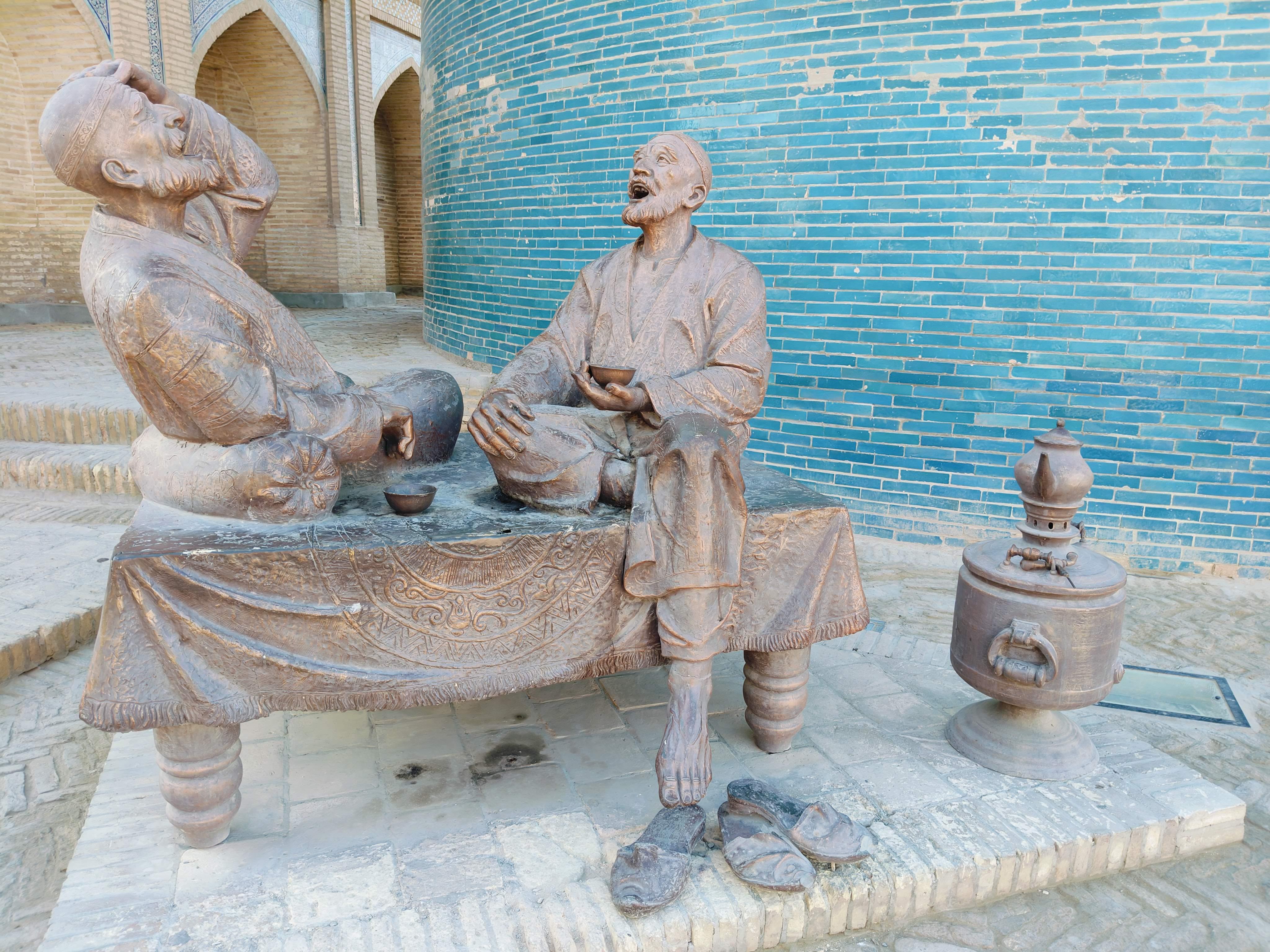
Daily Summary
Our final morning in Khiva featured the highlight of climbing the Islam Khoja Minaret. The ascent involved 119 steps, some quite steep, but was manageable and not claustrophobic. The reward was a spectacular 360-degree view of the city. We spent our remaining time exploring more sites within the city walls before catching our evening train to Tashkent.
What We Enjoyed & Recommend
The minaret climb was a definite highlight, offering unparalleled views of Khiva. Despite the steep steps, the climb was quite manageable and not as challenging as it might seem. We had another good meal at Mirzo Boshi Cafe, with excellent fries and good gumma, though the lentil soup was just okay.
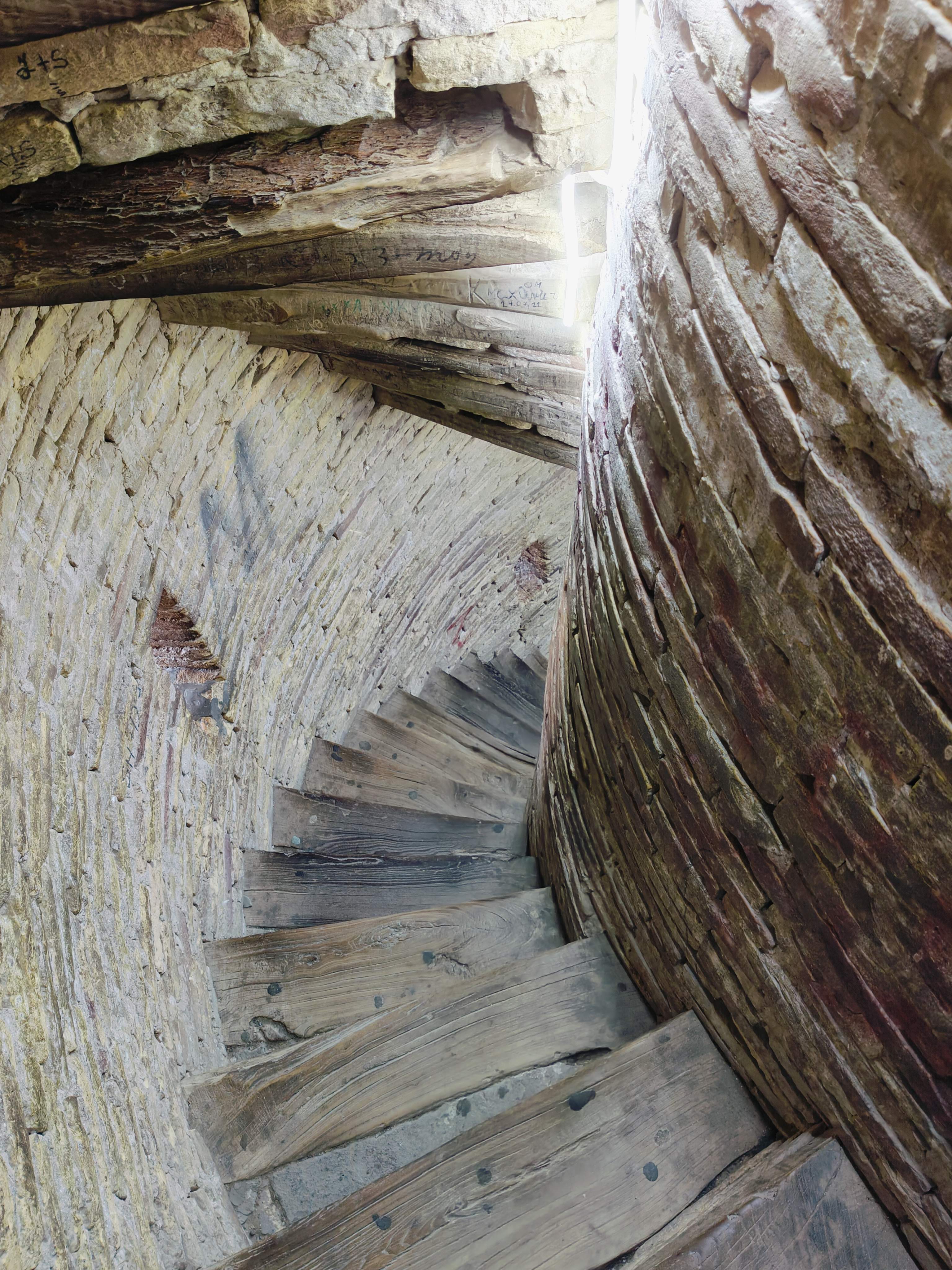
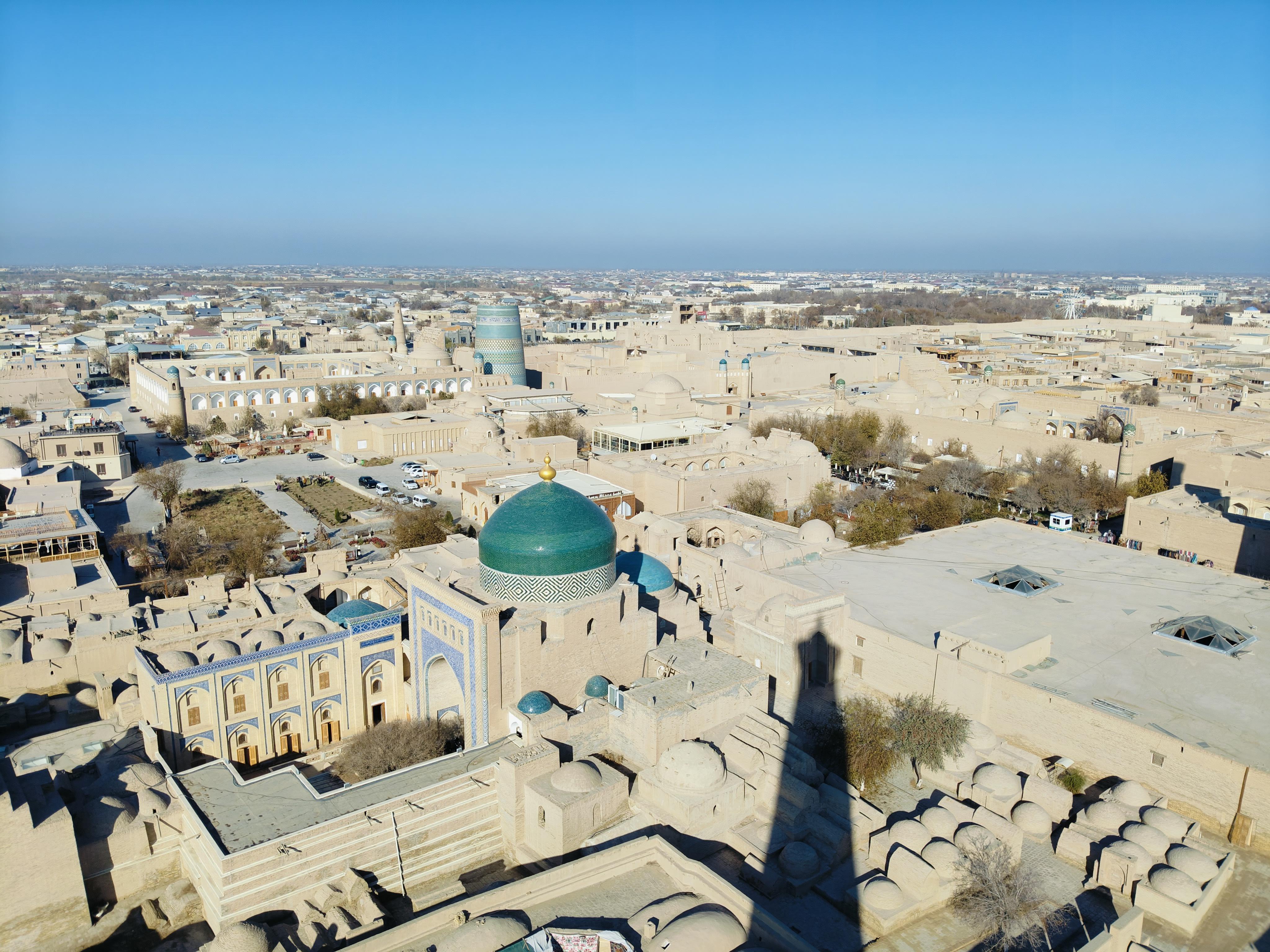
Tips
It's best to climb the minaret earlier in the day to avoid crowds and heat. Take the steps slowly, especially the steeper sections, and you'll be fine. The views are absolutely worth the effort.
Day 12: Return to Tashkent
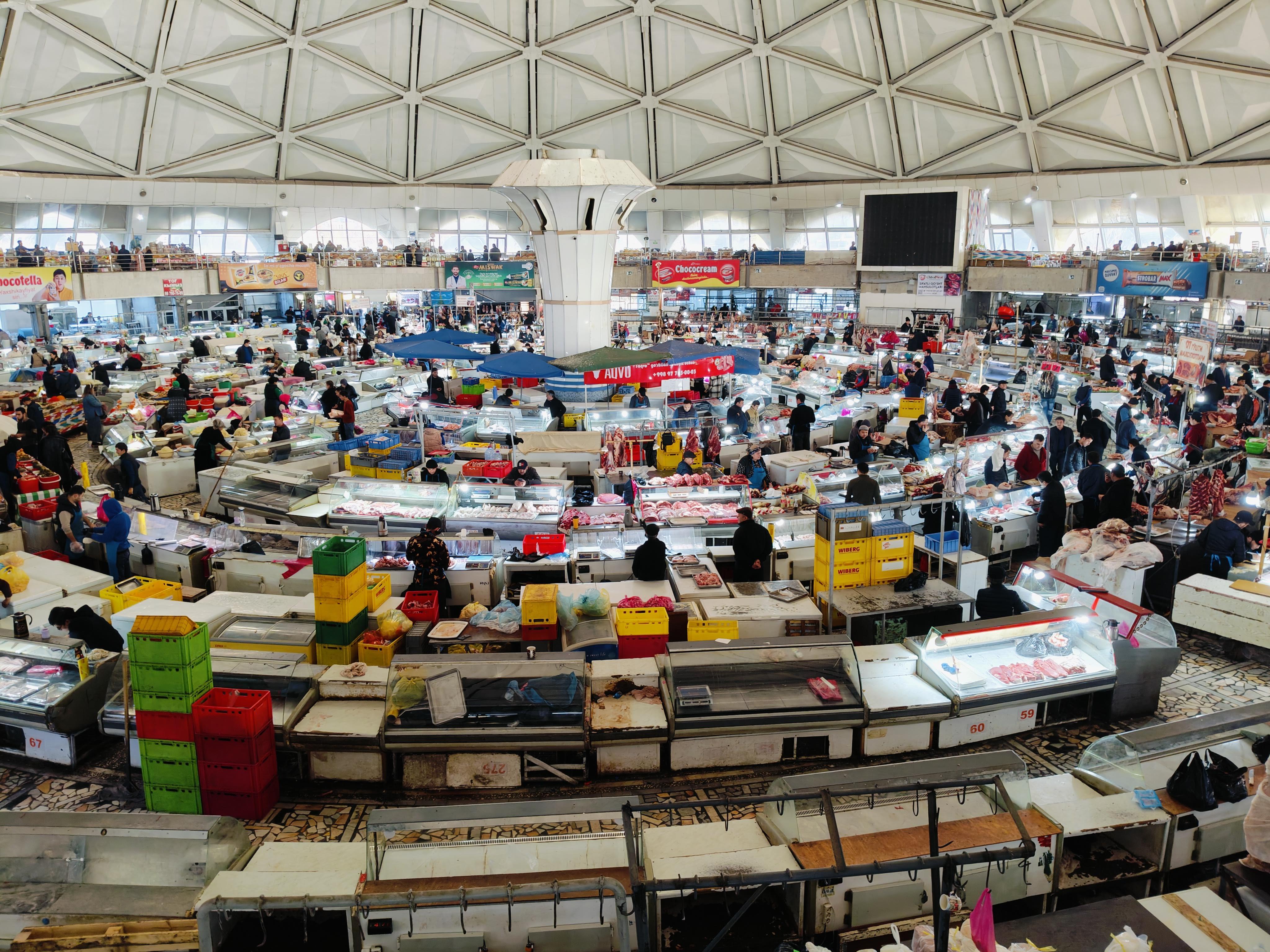
Daily Summary
Back in Tashkent, we began with exploring the bustling Chorsu Bazaar, where we purchased some dry fruits. A short 5-minute walk took us to Kukaldosh Madrassa. The highlight of our day was touring several beautiful metro stations, including Kosmonavtar, Alisher Navoi, Amir Timur, and Pushkin. We ended our day at Tashkent City Park, enjoying its fountain shows that run every half hour from 7:30 to 9:00 PM.
What We Enjoyed & Recommend
The metro stations were architectural masterpieces and incredibly economical to visit. Walking through Chorsu Bazaar was fascinating, with its variety of fruits, vegetables, meat, and bread stalls. For dinner, we tried Karvaan Indian Restaurant (good food but no card payments) and Raj Kapur Indian Restaurant (average quality).
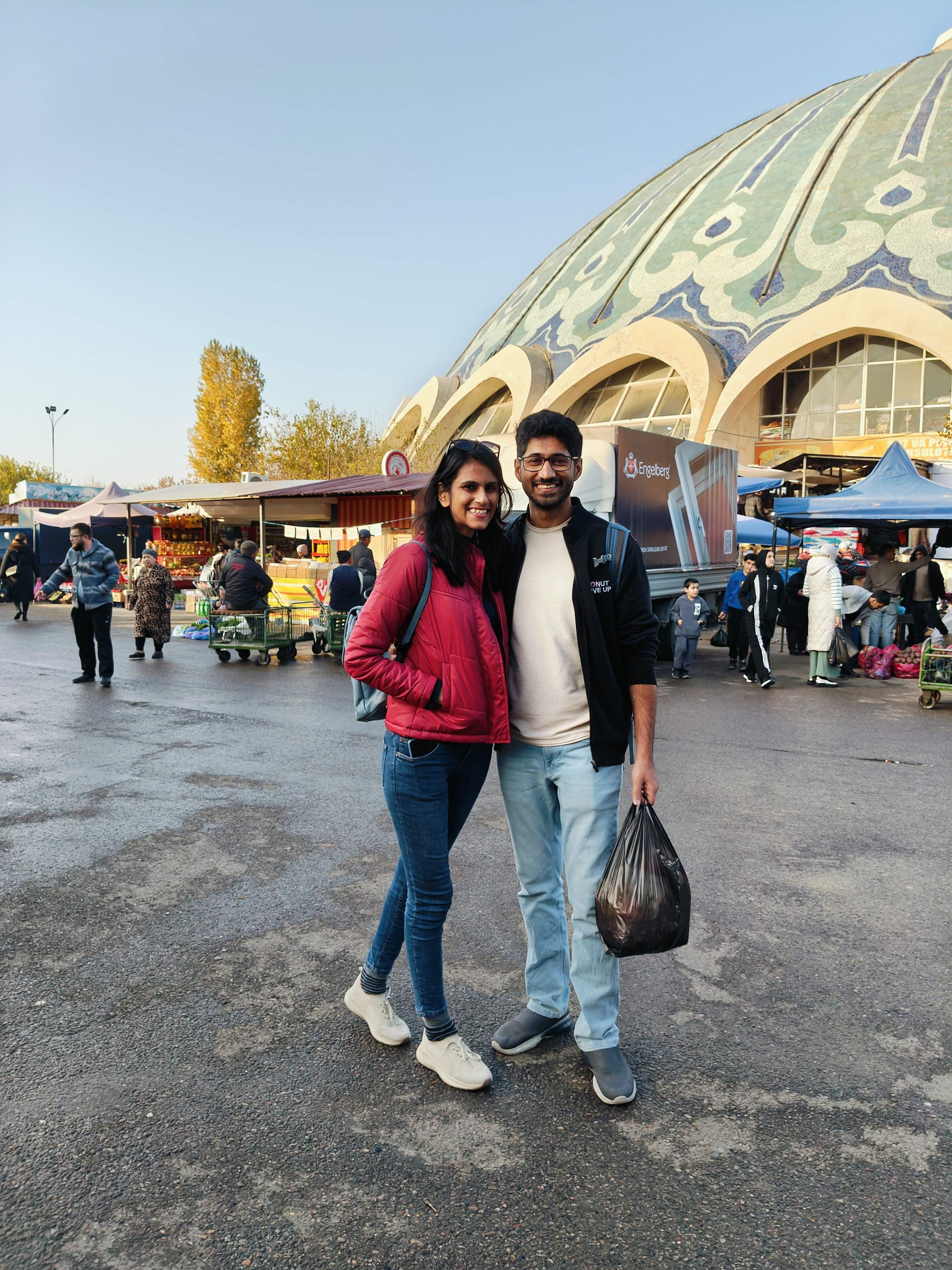
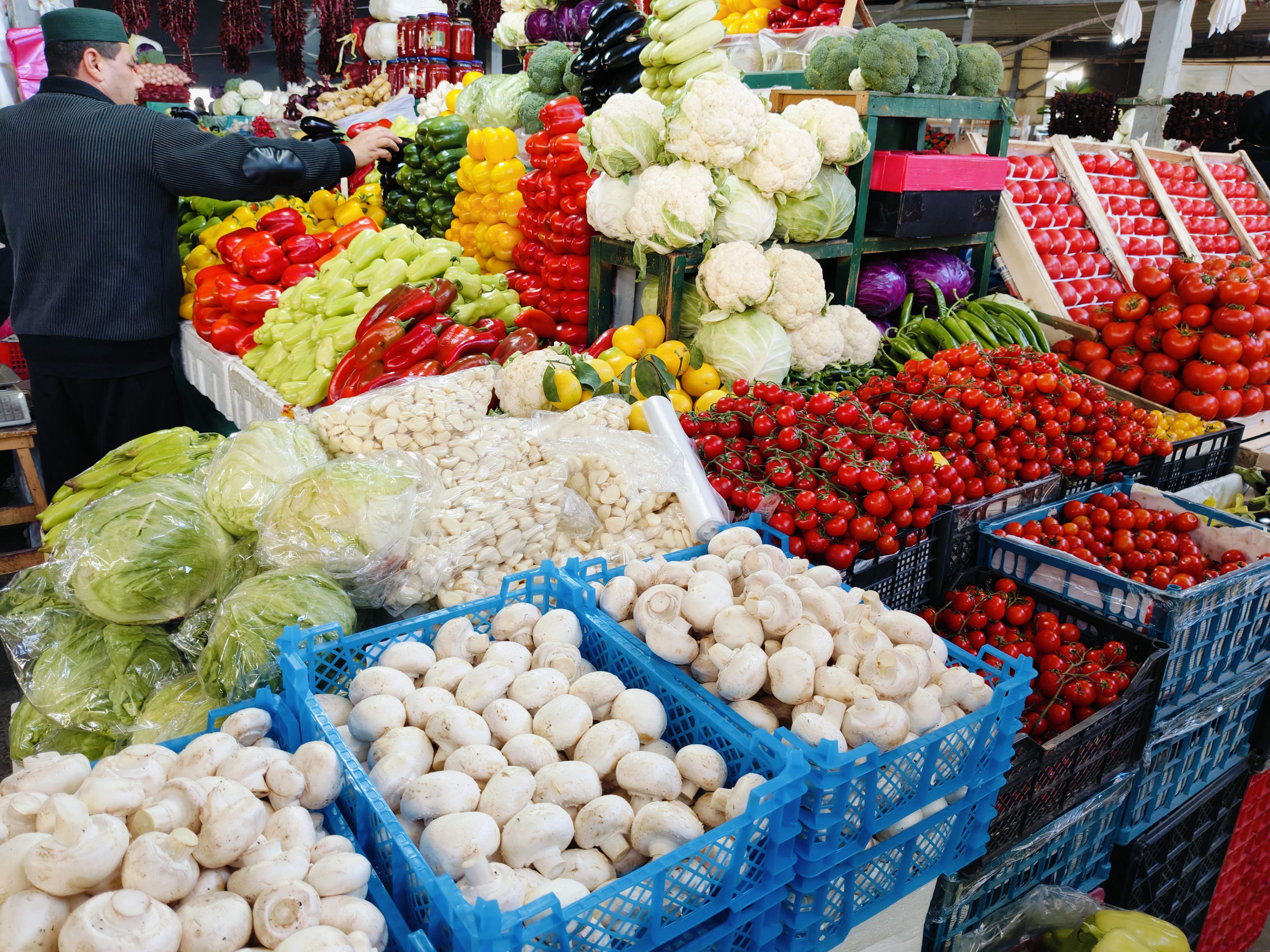
What Can Be Skipped
After seeing the grand architecture of Samarkand and Bukhara, Kukaldosh Madrassa feels less impressive and can be skipped. Tashkent City Park, while nice, is mainly a pricey area and optional unless you're specifically interested in modern developments.
Day 13: Exploring More of Tashkent
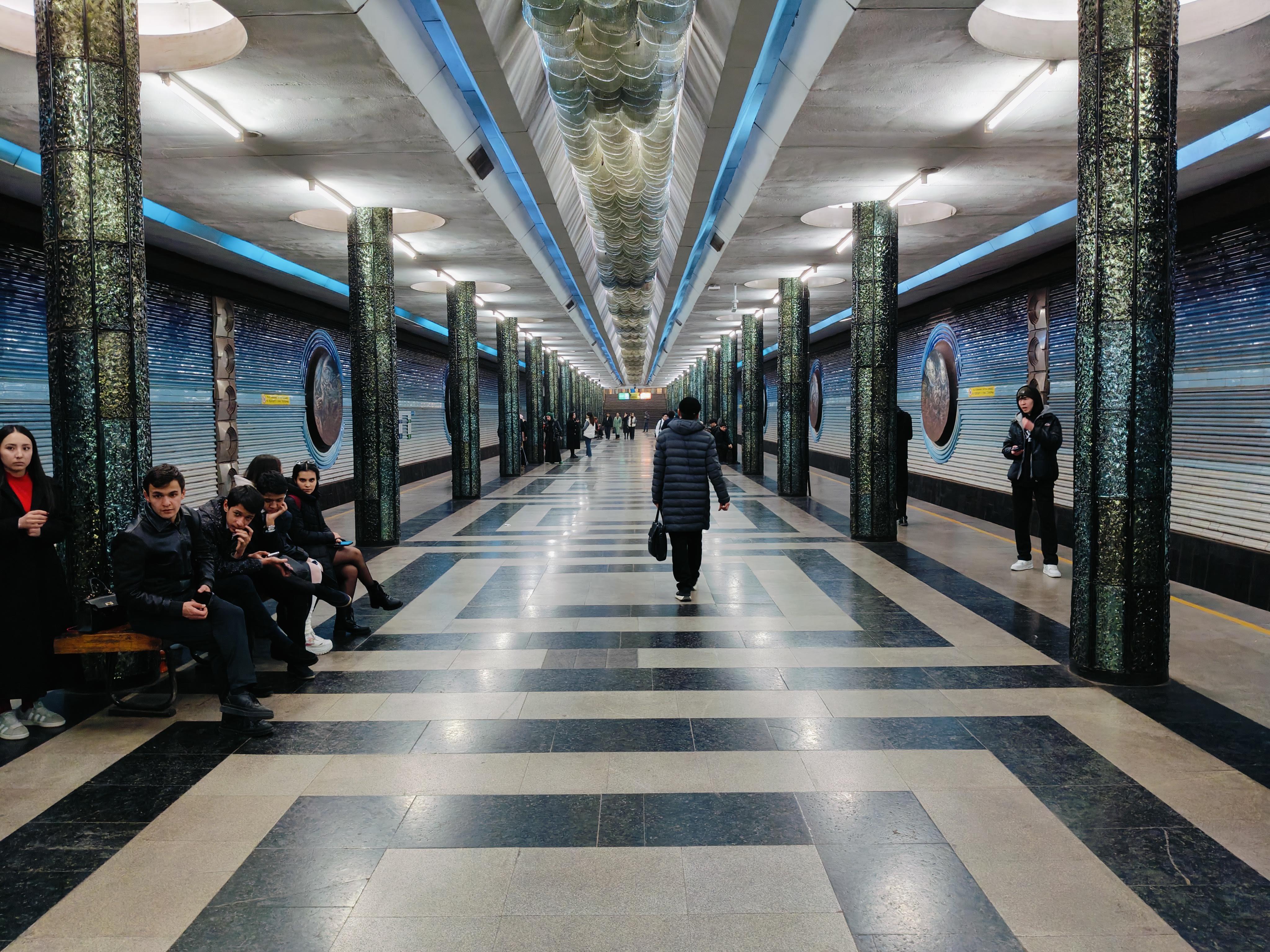
Daily Summary
Our second last day began at the State Museum of Temurids, where we spent a couple of hours despite the limited English descriptions. We then relaxed in Amir Temur Square's park, surrounded by beautiful trees. Our metro station exploration continued with visits to Oybek, Gafur Gulom, Tashkent, and Mustakillik Maydoni stations. We also visited the modern Minor Mosque with its striking white tiles and the Hazrati Imam complex, home to what's claimed to be the world's oldest Quran. Our attempt to visit Independence Square was thwarted as it's closed on weekends.
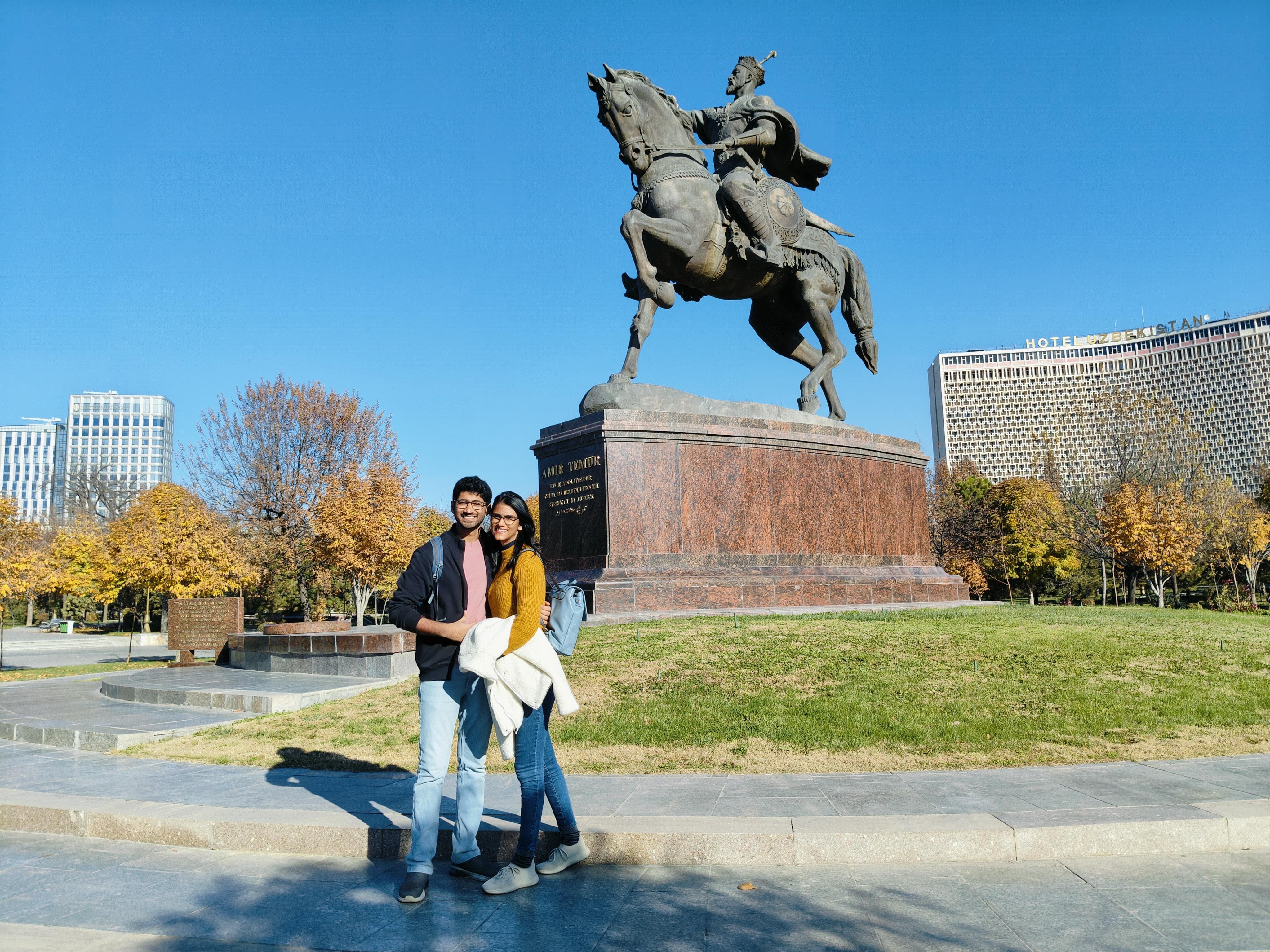
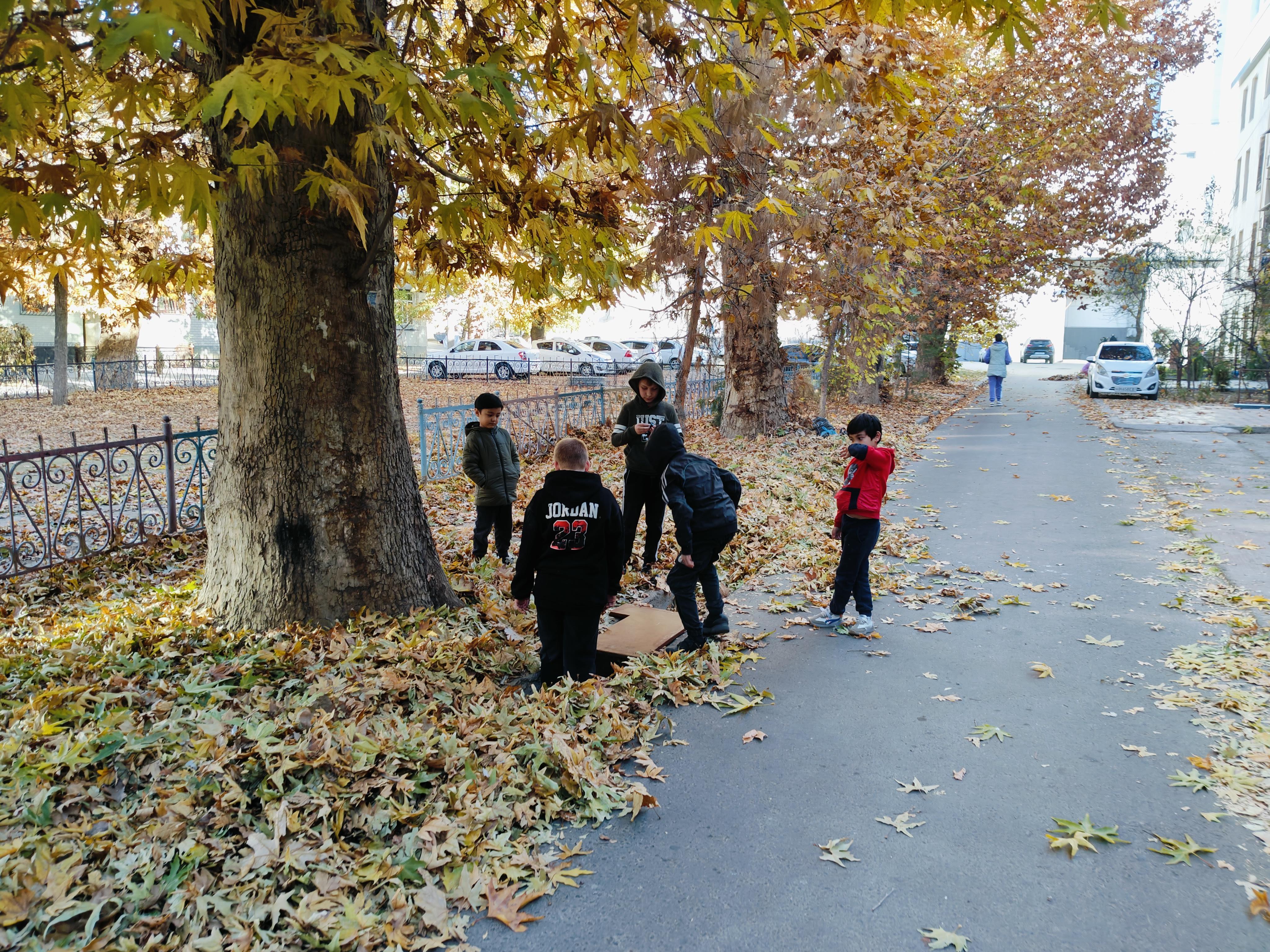
What We Enjoyed & Recommend
The highlight was undoubtedly the ancient Quran at the Hazrati Imam complex - it was fascinating to be in the presence of a book written 1,400 years ago. The Minor Mosque's bright white tiles were stunning, and the metro stations continued to impress with their architectural beauty. We also ate our best Indian meal in Tashkent at Mumbai Indian Restaurant, where we particularly enjoyed their tomato soup and dum aloo.
Tips
Plan extra time at Hazrati Imam complex to fully appreciate the ancient Quran. Note that Independence Square is closed on weekends, so plan accordingly if you want to visit. Of the three Indian restaurants we tried in Tashkent, Mumbai Indian Restaurant was definitely the best.
Day 14: Final Experiences in Tashkent
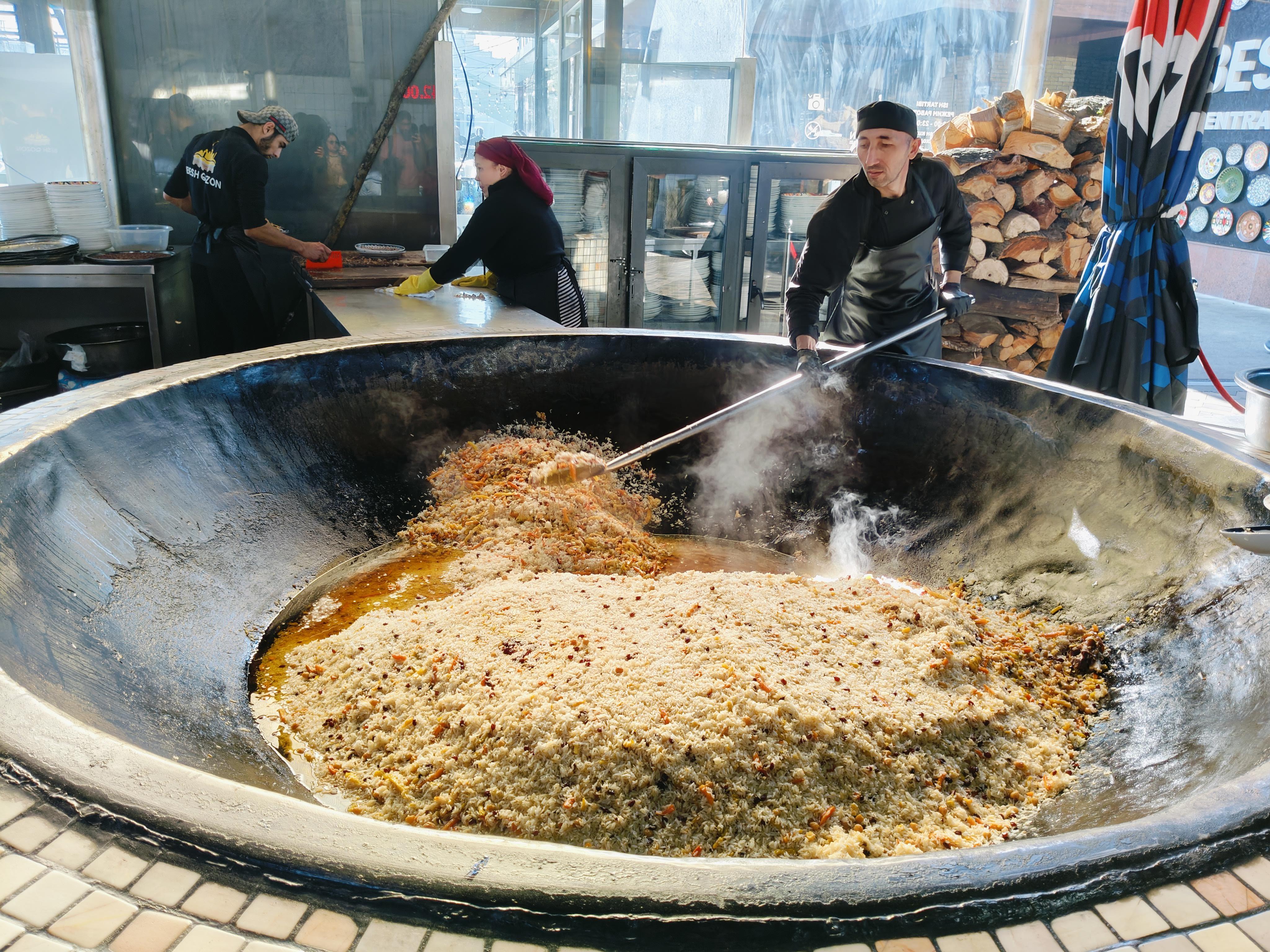
Daily Summary
Our final day in Tashkent was filled with unique experiences. We started at Besh Qazon, where we witnessed the fascinating community Plov cooking experience. Huge vessels were used to prepare this traditional dish, and it was amazing to see many locals gathering here for lunch. Later, we visited the Tashkent TV Tower, the city's tallest structure, where we spent about two hours enjoying 360-degree views of the city and had coffee and fries at the revolving restaurant.
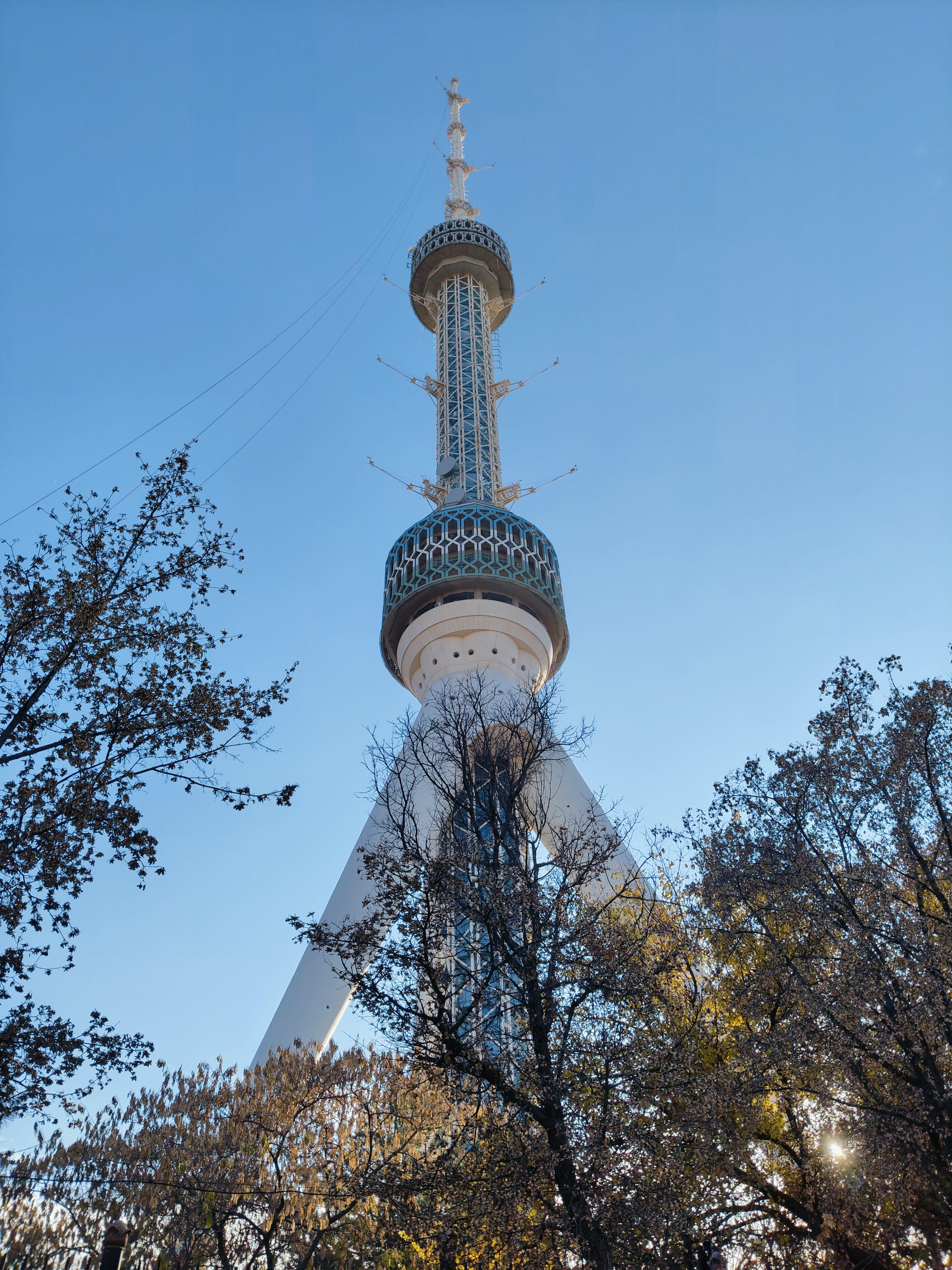
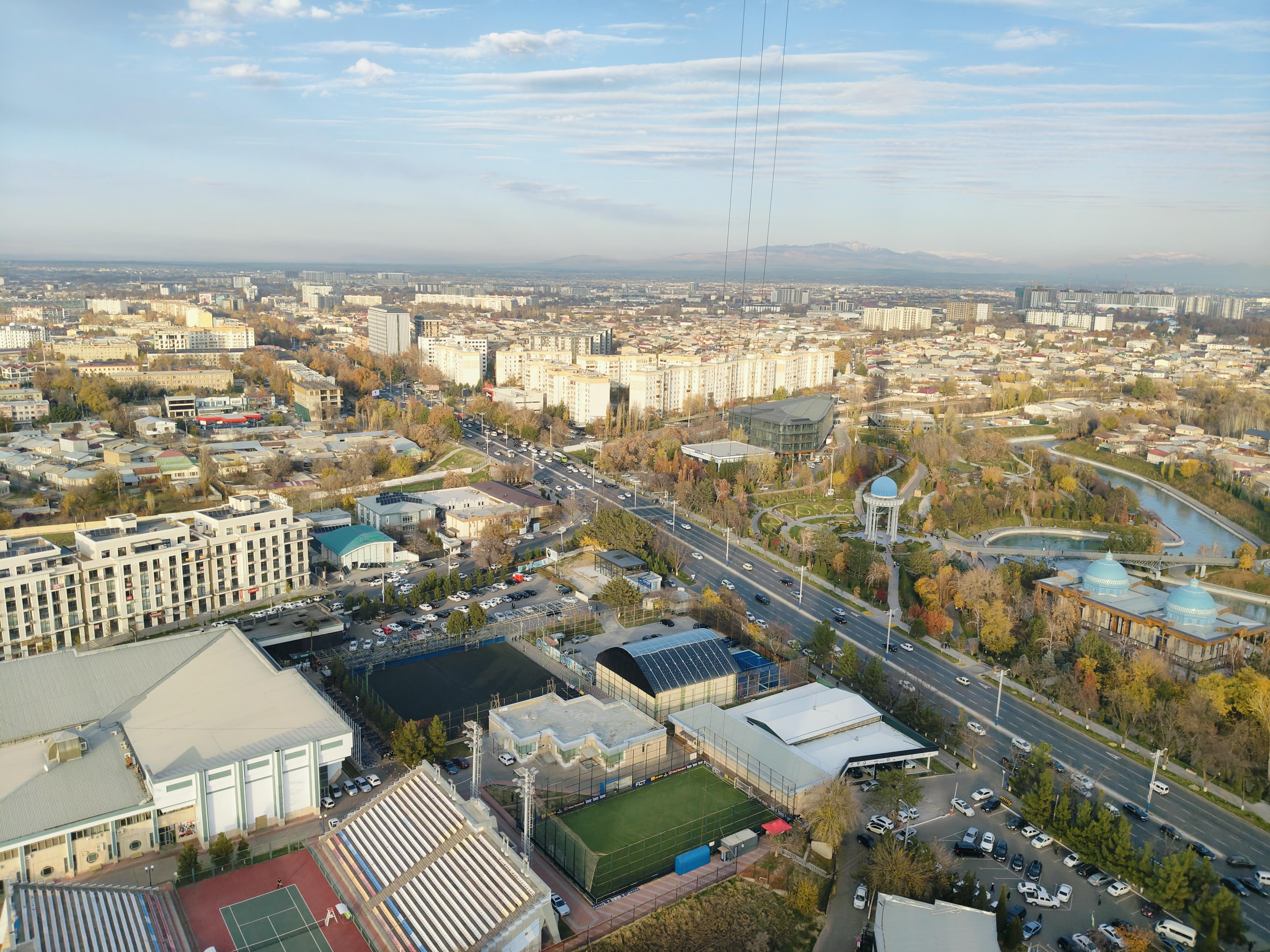
What We Enjoyed & Recommend
The Besh Qazon experience provided a wonderful glimpse into local food culture and community gathering. The TV Tower offered spectacular views of Tashkent, and the revolving restaurant added a special touch to our final day. We concluded our Uzbekistan journey with another excellent meal at Mumbai Indian Restaurant, consistently our favorite Indian restaurant in Tashkent, enjoying their delicious tomato soup and malai kofta one last time.
What Can Be Skipped
If you're really short on time, both Besh Qazon and the TV Tower can be skipped. While they offer interesting experiences, they're not essential to understanding Uzbekistan's cultural heritage. The Museum of Applied Arts was on our potential list but we didn't visit it - you might want to consider it if you have extra time.
Tips
The TV Tower visit costs 40,000 UZS per person. If you're interested in the revolving restaurant, consider getting a coffee there. For our final meal in Tashkent, we again went to Mumbai Indian Restaurant - after trying three Indian restaurants in the city, this was consistently the best.
Practical Information
Accommodation
Tashkent: City Centre Hotel
- Central location with all attractions within 3-4 kms
- Clean, modern rooms with health faucet (rare in Uzbekistan)
- Window-less room cost ₹3,600 per night (booked via Agoda)
- Card payments accepted
Samarkand: Hanifa Boutique
- Prime location - all major attractions under 1km away
- Beautiful wooden architecture and decor
- Exceptionally helpful staff
- No health faucet available
- Card payments accepted
Bukhara: Hotel Marhaba Boutique
- 10-minute walk to main attractions
- Note: Route gets secluded at night
- Cash payments only - prepare ~200+ USD
- Good quality rooms and service
Khiva: Hotel Nazira Boutique
- Located inside Ichan Kala (walled city)
- Perfect base for exploring - everything walkable
- Traditional architecture
- No need for taxis during your stay
Transportation
Inter-city Travel
- Afrosiyob high-speed trains are excellent
- Tashkent to Samarkand: 300km in 2.5 hours
- Samarkand to Bukhara: 280km in 2 hours
- Modern facilities and comfortable seating
- Reliable schedules
- The sharq trains for long distance travel are also very comfortable with excellent temperature control
- Bukhara to Khiva: 450km in 6 hours
- Urgench to Tashkent (overnight train): 1000km in 15 hours
Local Transportation
- Yandex taxi - reliable, cheap, and readily available
- Most historic centers are very walkable
- Metro in Tashkent - economical and beautiful stations
Food Options
Tashkent
- Mumbai Indian Restaurant - Best Indian food in the city
- Karvaan - Good food but cash only
- Raj Kapur - Decent options
Samarkand
- The Indian Kitchen - Multiple branches, consistent quality
- Cafe Punjab - Good Indian food
Bukhara
- Joy Restaurant - Good vegetarian options, accepts cards
- Chess Zone - Tasty international cuisine
- The Terrace - Average food, cash only
Khiva
- Terressa Restaurant - Good Vegetarian options available, a bit pricey - accepts cards
- Mirzo Boshi cafe - Some vegetarian options available, average food - accepts cards
Weather
Tashkent
- Hovering between 8 to 15 degree Celsius
Samarkand
- This was the coldest part of the trip. Day temperatures were between 0 to 5 degrees celsius and night temperatures were between -1 to -2.
Bukhara
- This was the warmest part of the trip. Bukhara hovered between 10 to 15 degrees celsius.
Khiva
- Khiva was quite cold as well with temperatures hovering between 0 to 6 degrees Celsius.
Entry Fees & Guides
Samarkand
- Registan: 65,000 UZS
- Bibi-Khanum Mosque: 40,000 UZS (2-day validity)
- Gur-i-Timur: 40,000 UZS
- Shah-i-Zinda: 40,000 UZS
- Guide fees: 80,000-300,000 UZS
Bukhara
- Ark of Bukhara: 70,000 UZS
- Poi Kalon Mosque: 20,000 UZS
- Abdul Aziz Madrasa: 20,000 UZS
- Guide fees: ~150,000 UZS
Khiva
- Universal ticket: 200,000 UZS (covers 40 monuments)
- Islam Khoja Minaret climbing: 100,000 UZS
- Guide fees: ~300,000 UZS
Costing (For 2)
Total Trip Cost Breakdown (in INR)
- Accommodation: ₹50,500
- Food: ₹25,000
- Flights and Visas (Mumbai to Tashkent and back): ₹63,500
- Intercity Trains: ₹12,500
- Entry tickets and guides: ₹18,000
- Travel / Cabs: ₹6,000
- Miscellaneous: ₹4,000
- Souvenirs: ₹2,100
- Total: ₹181,600